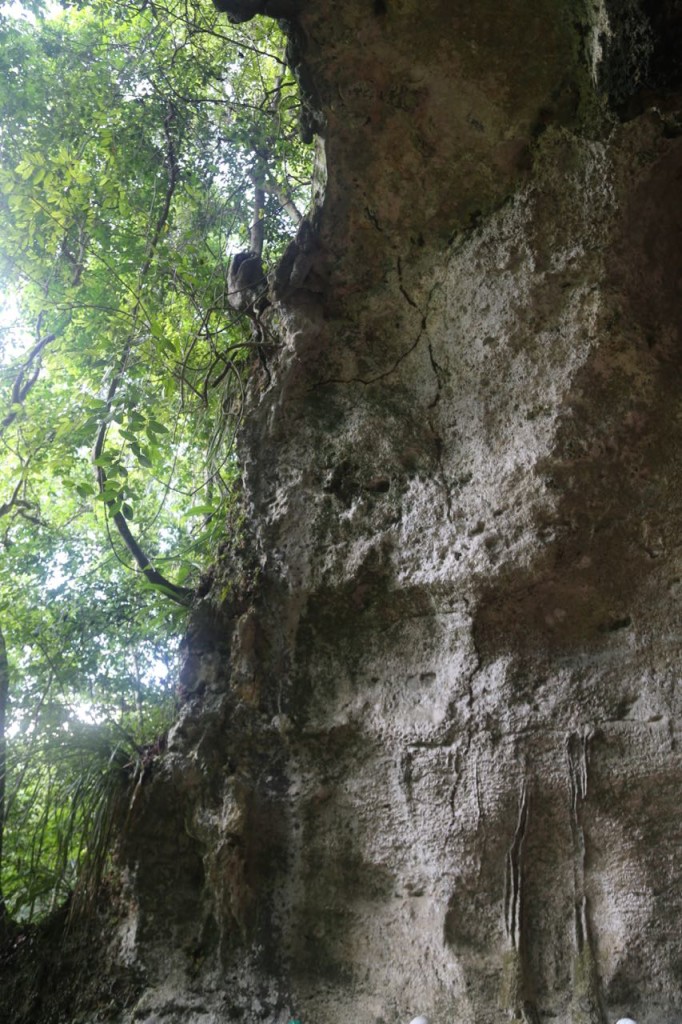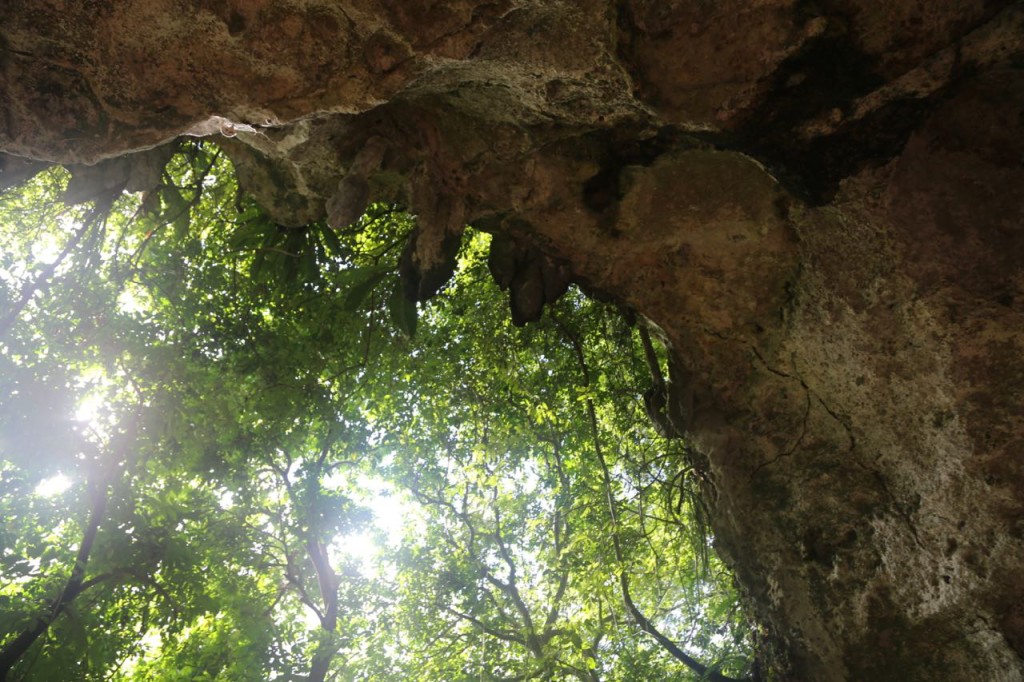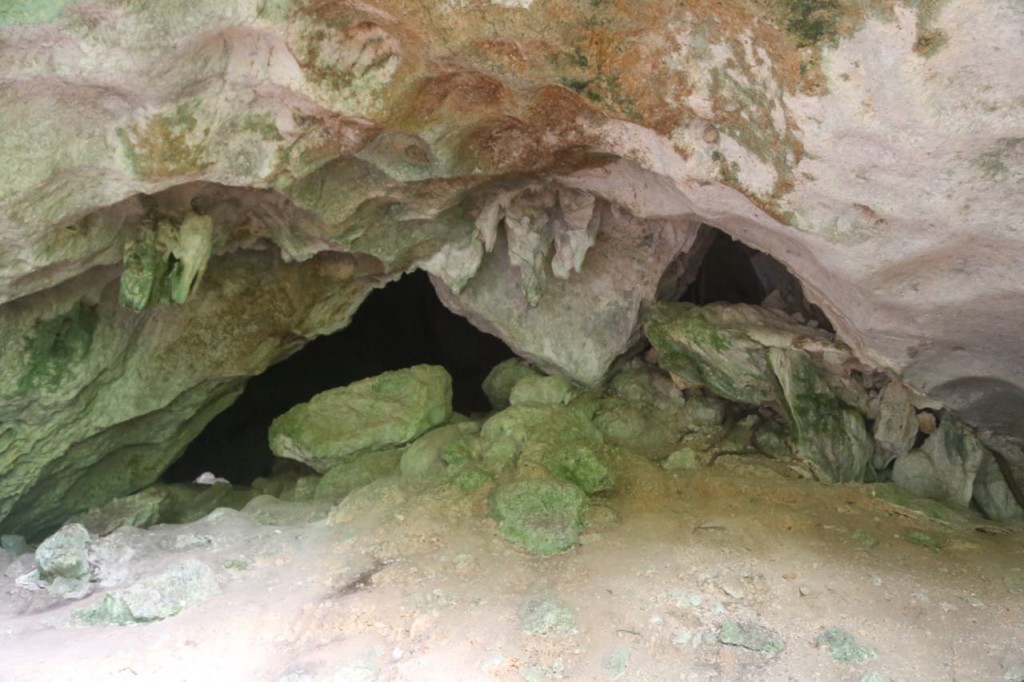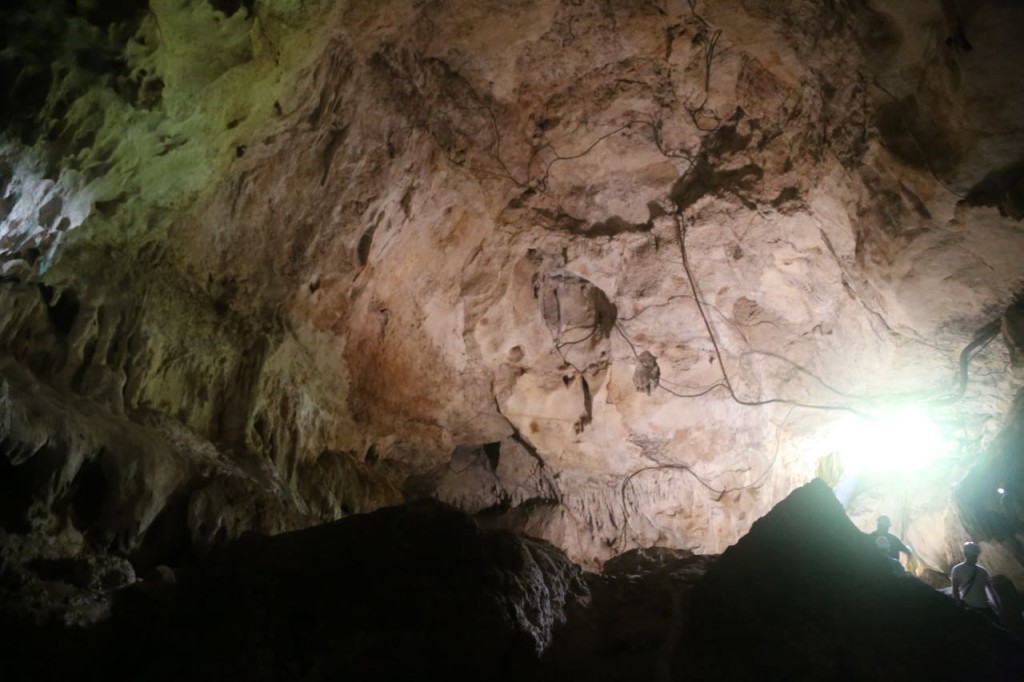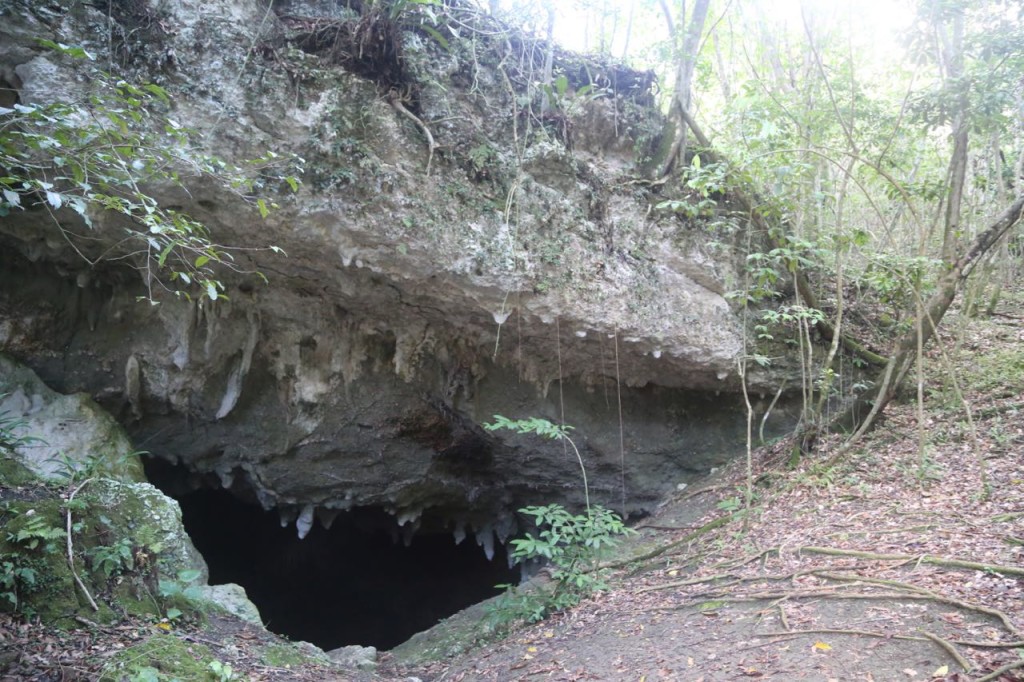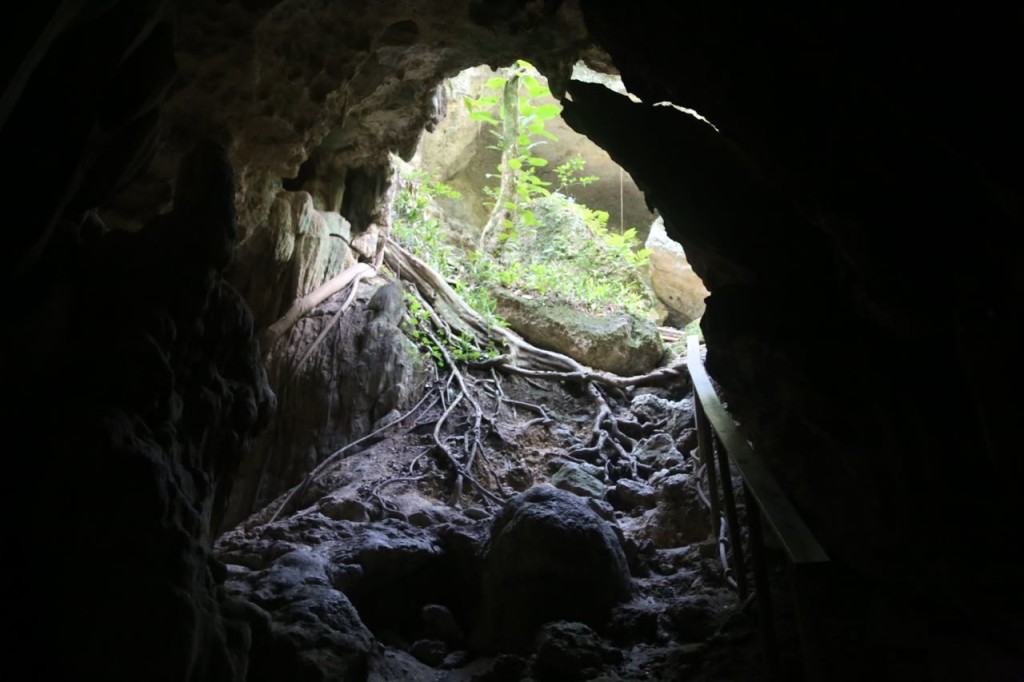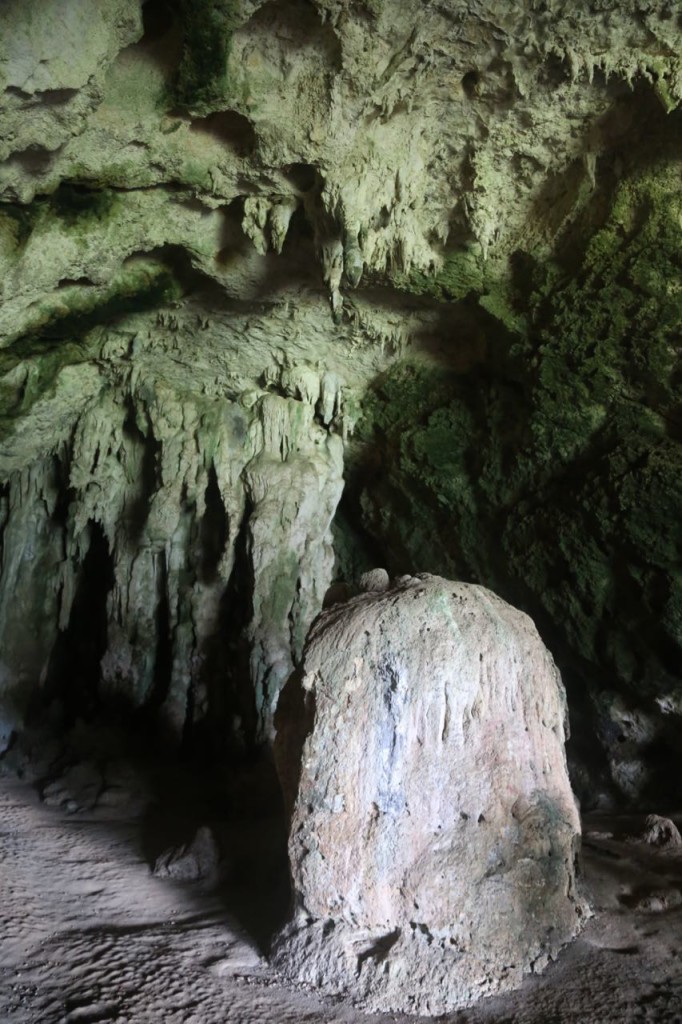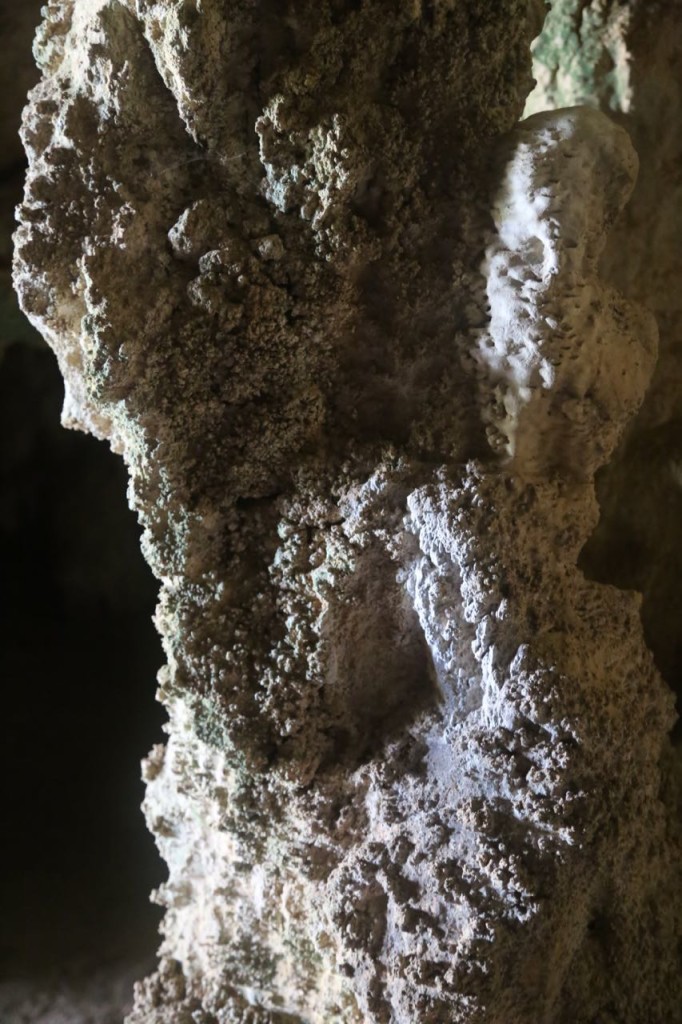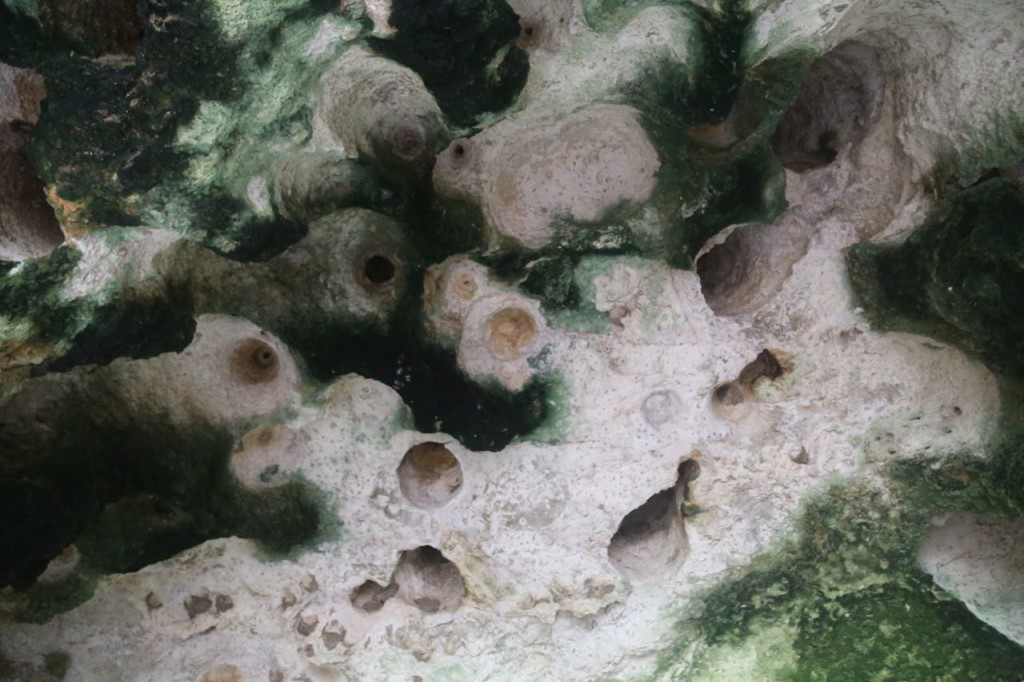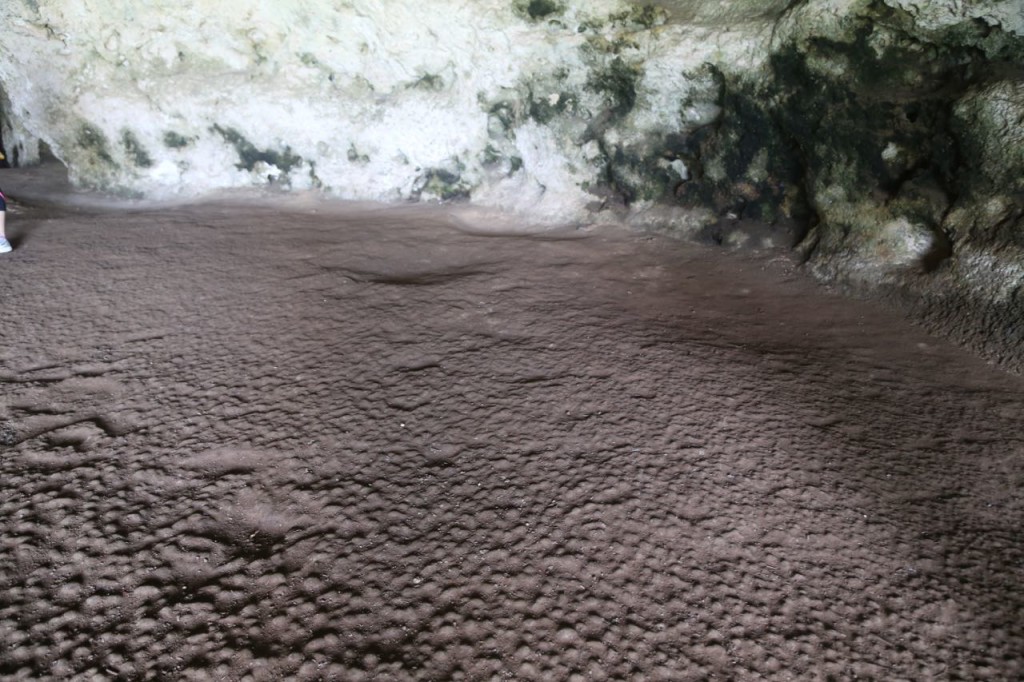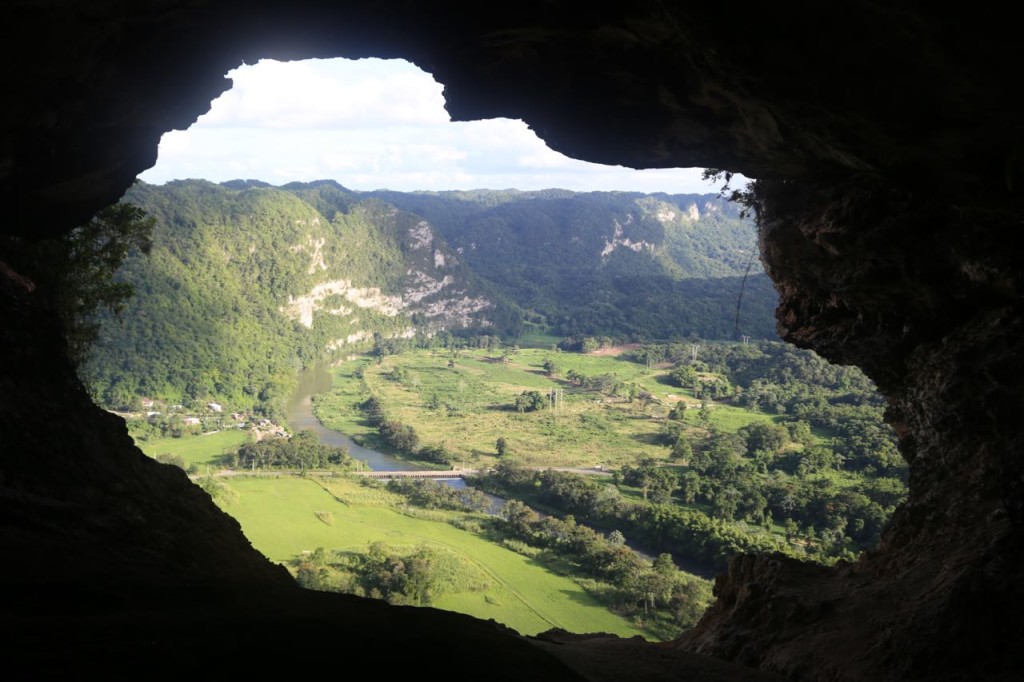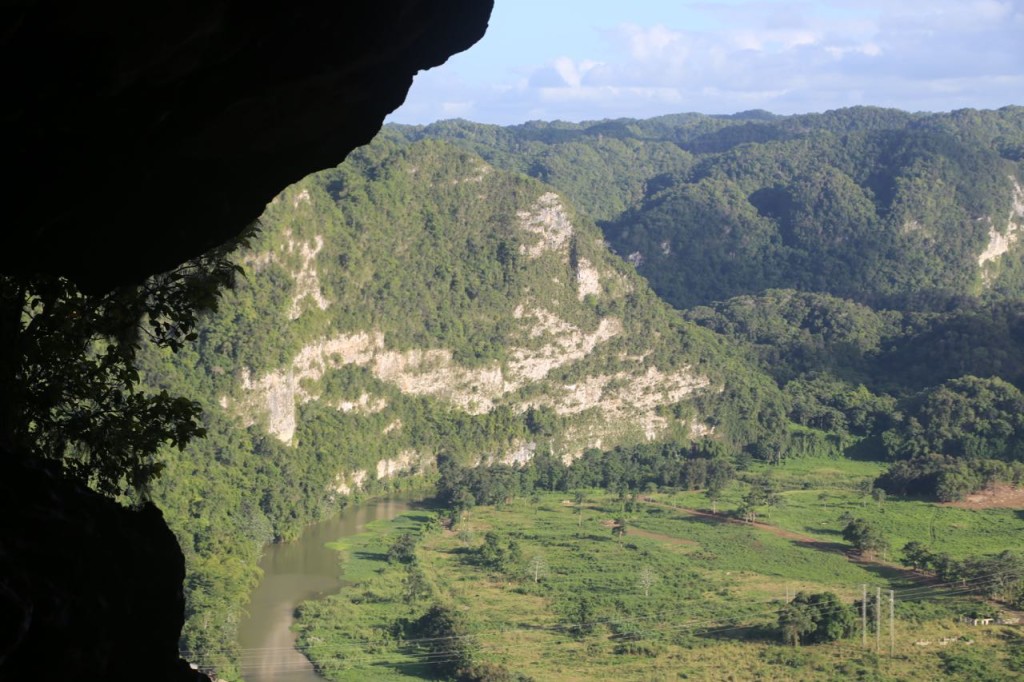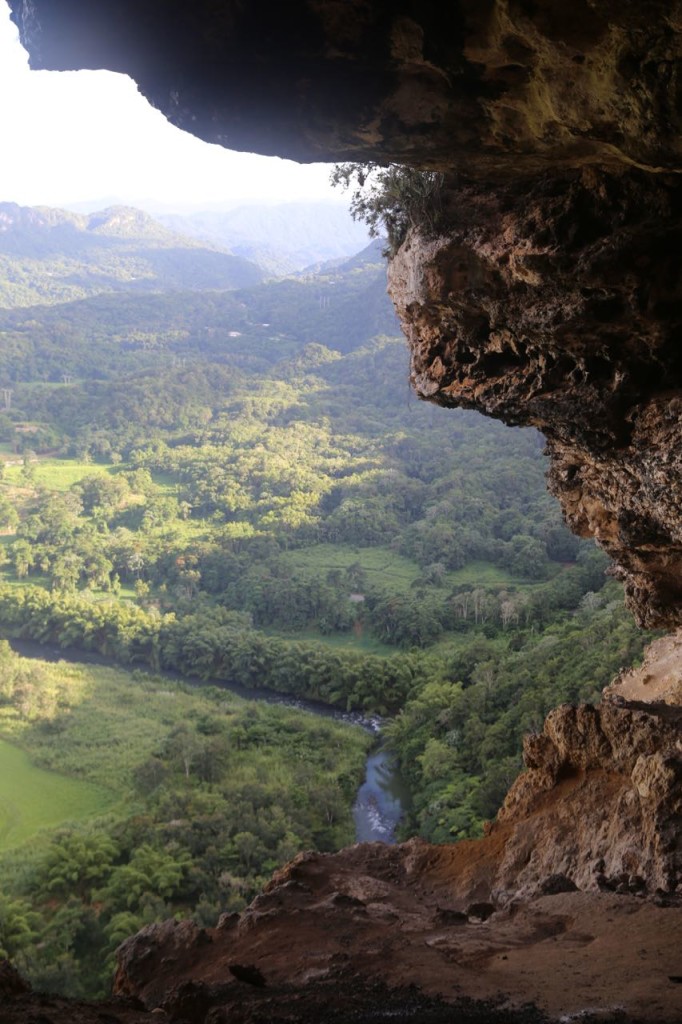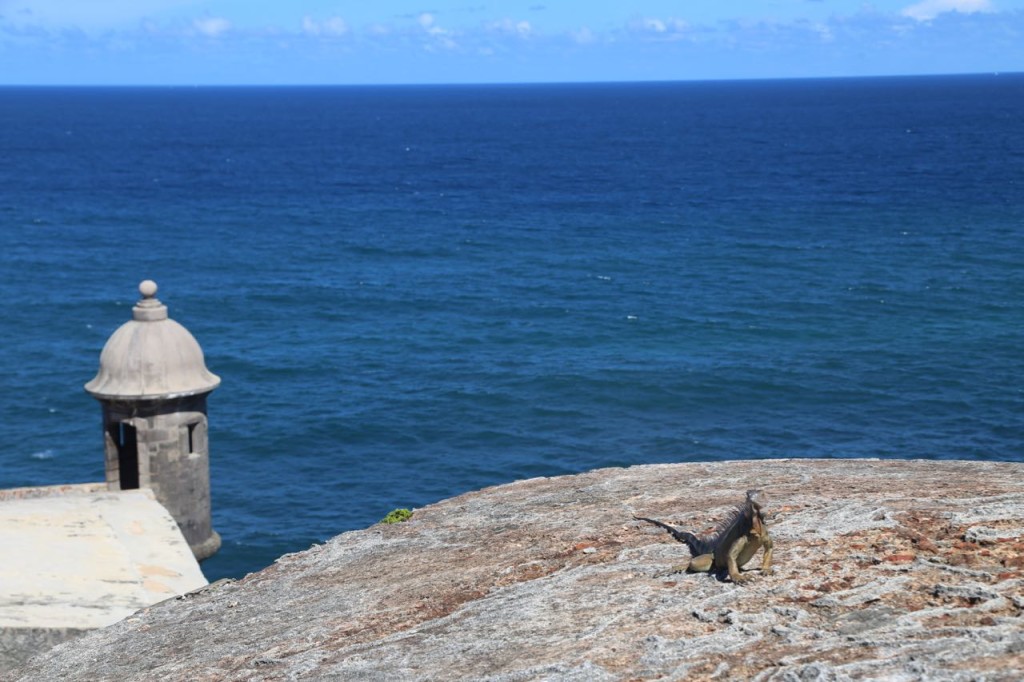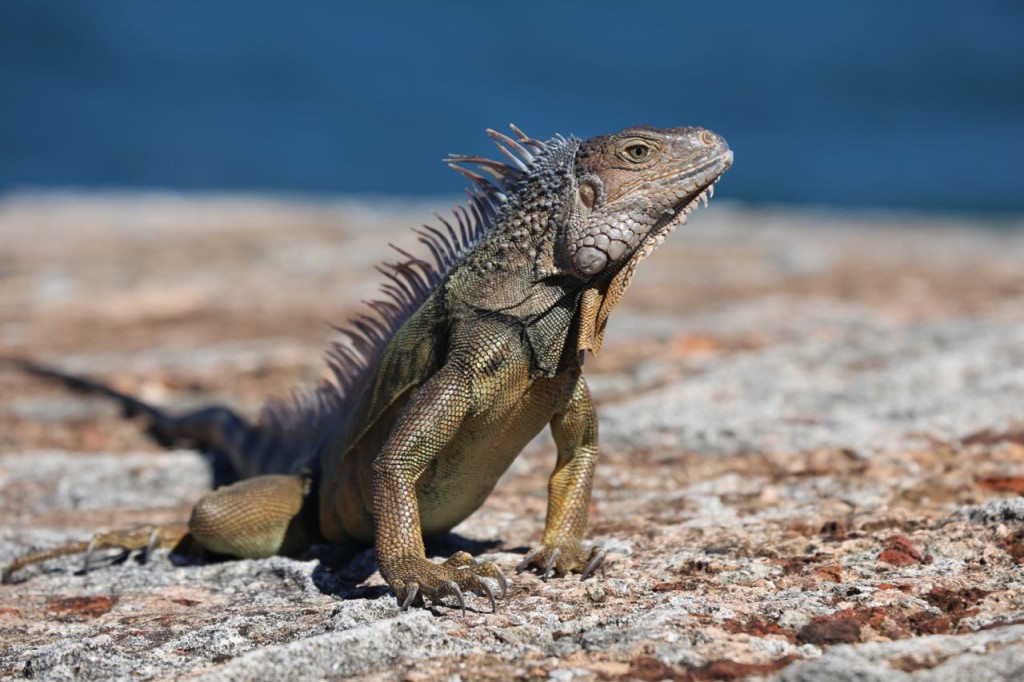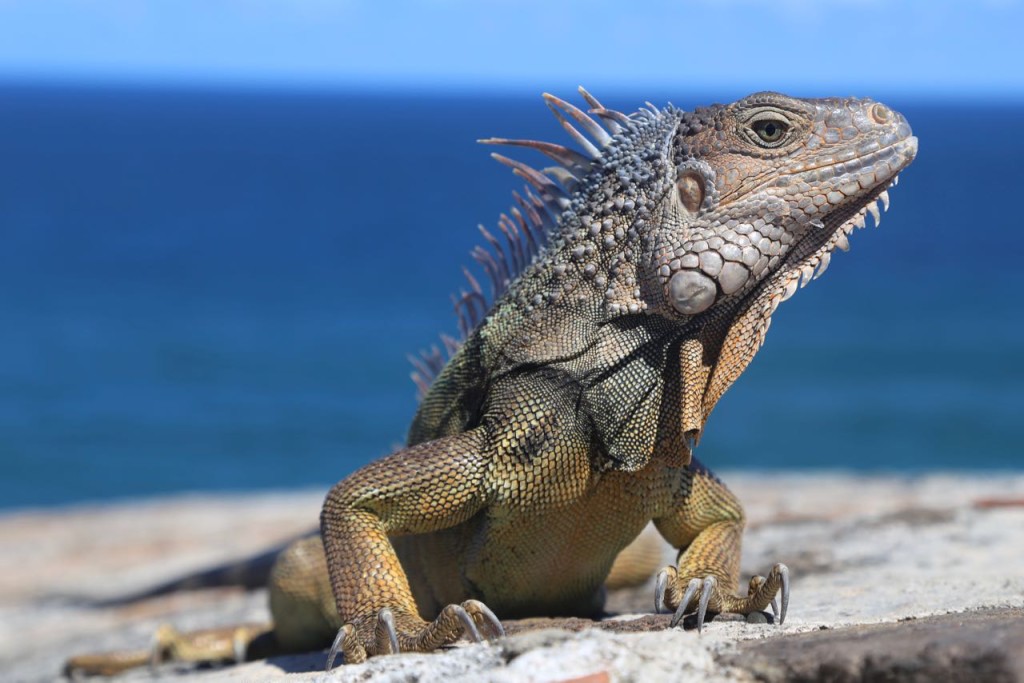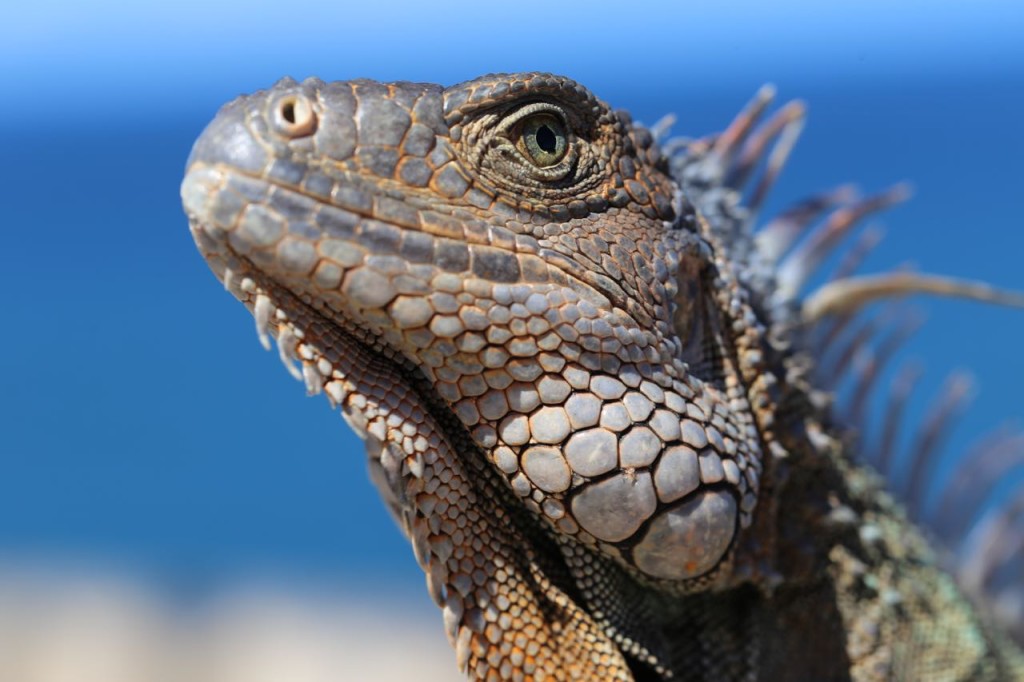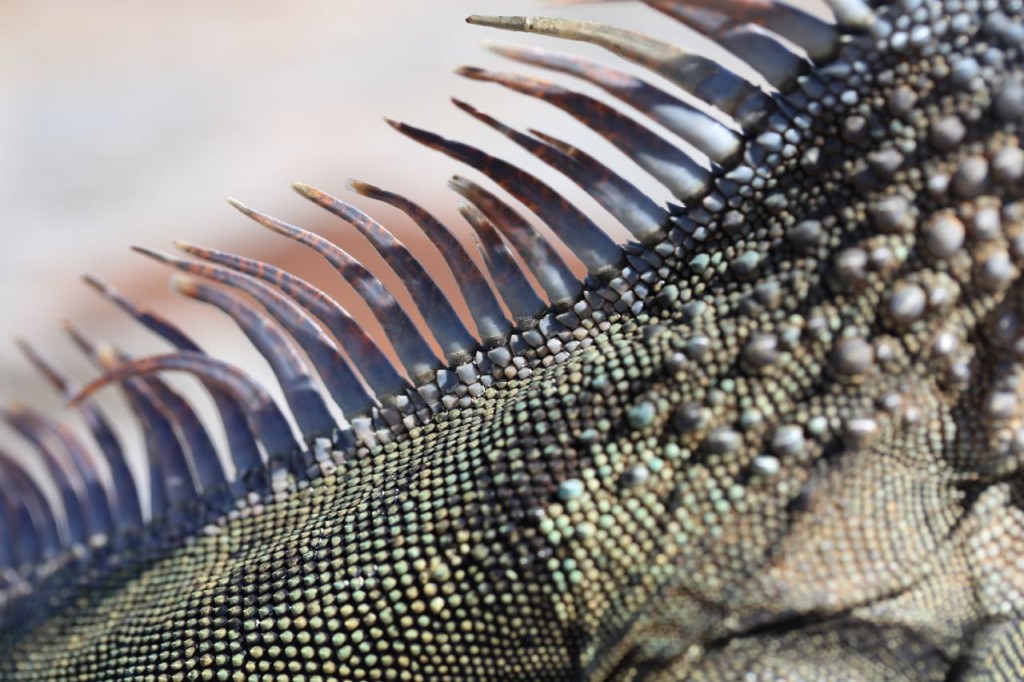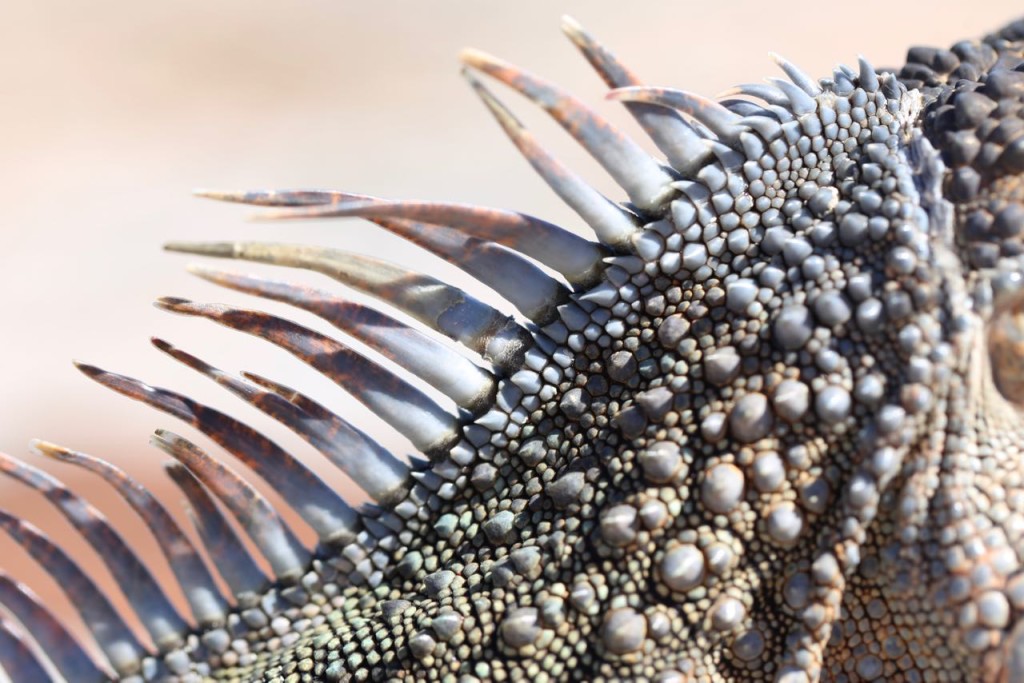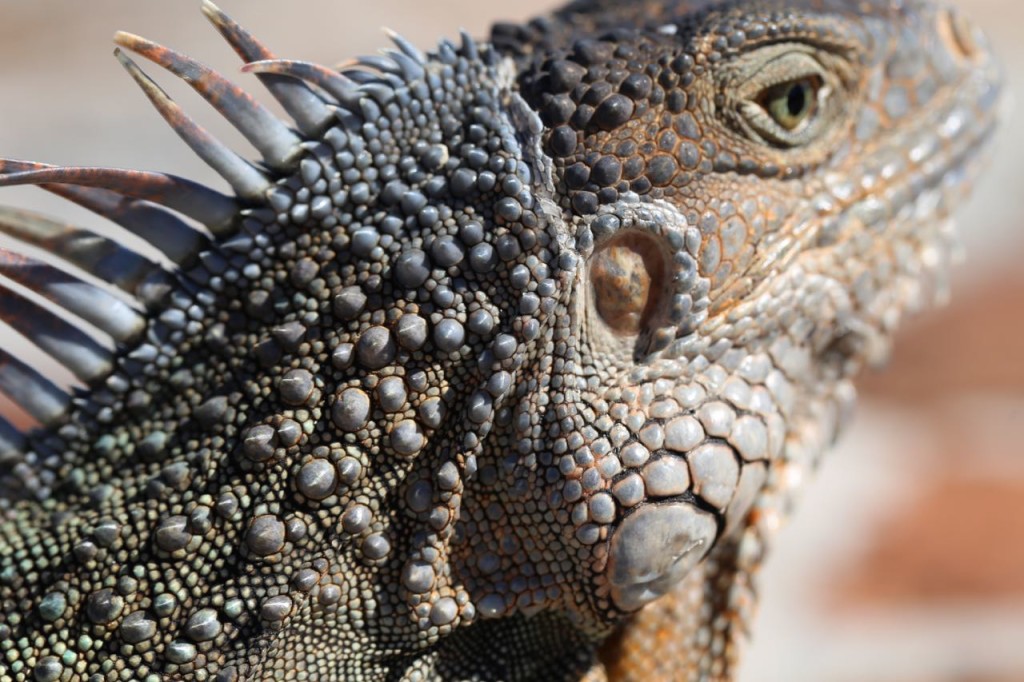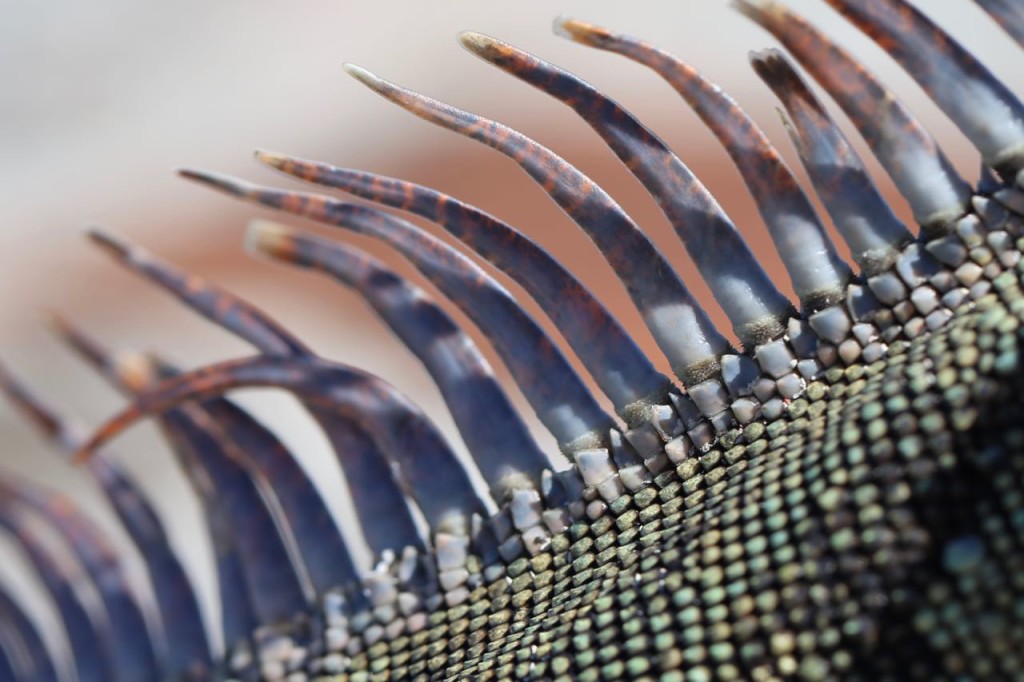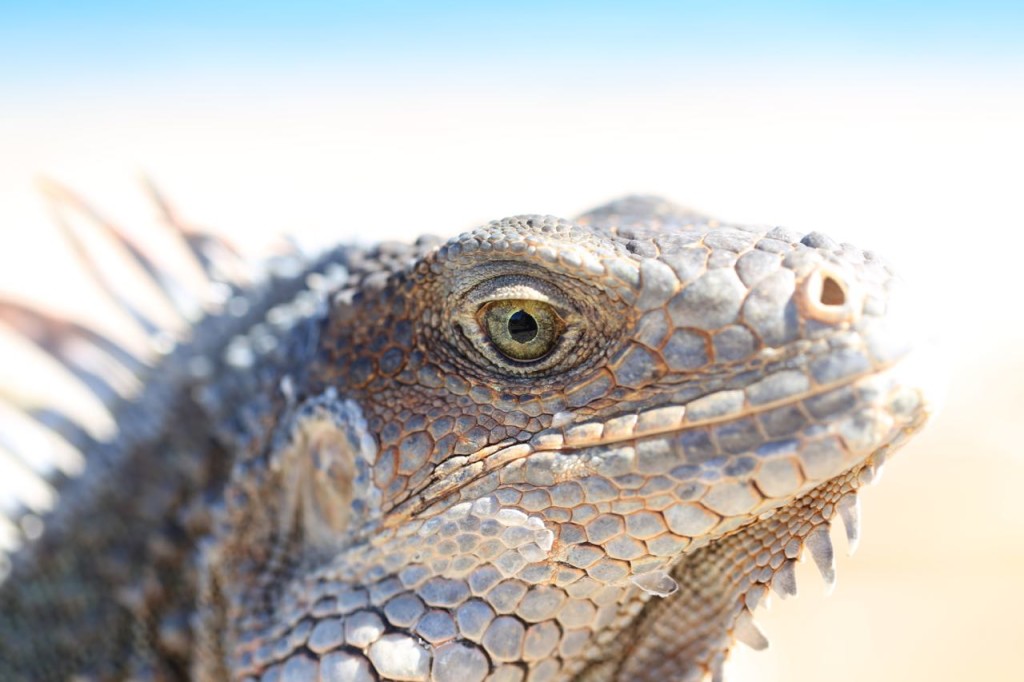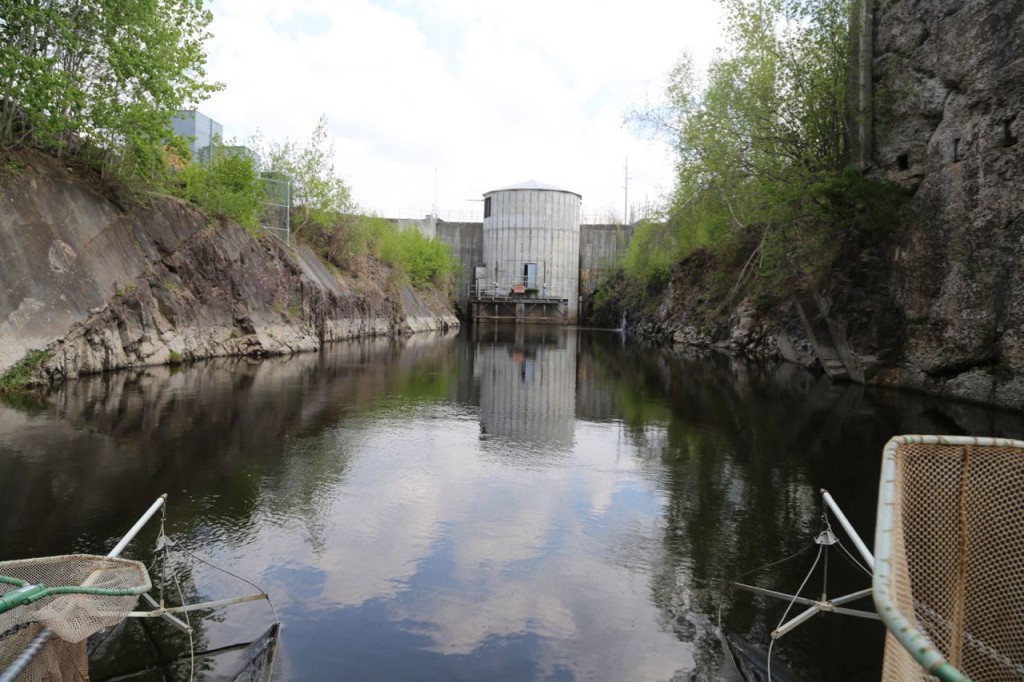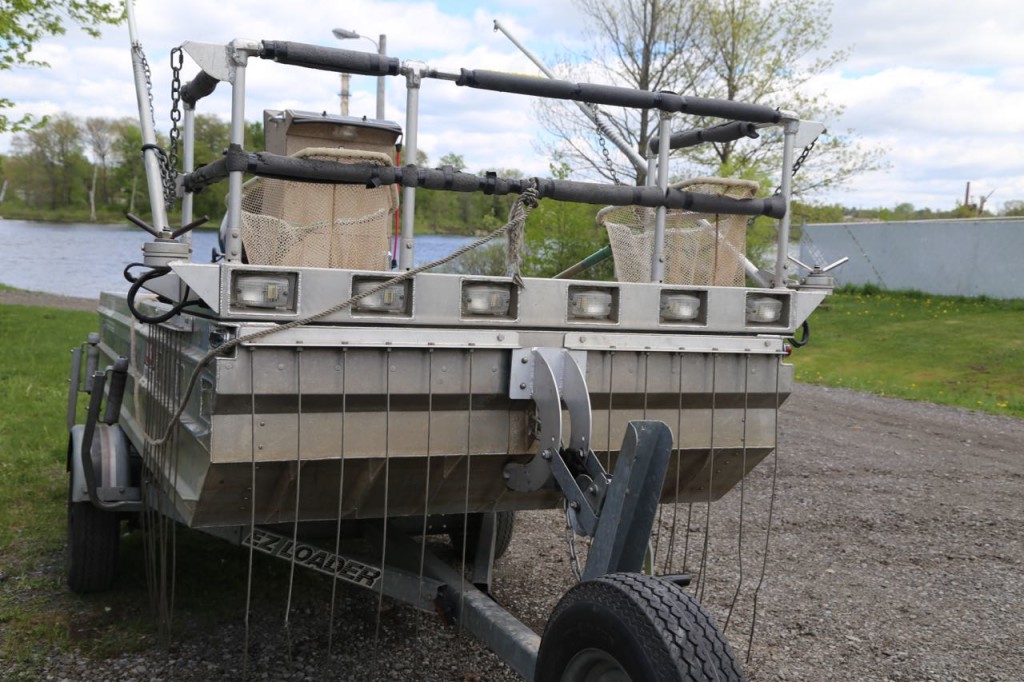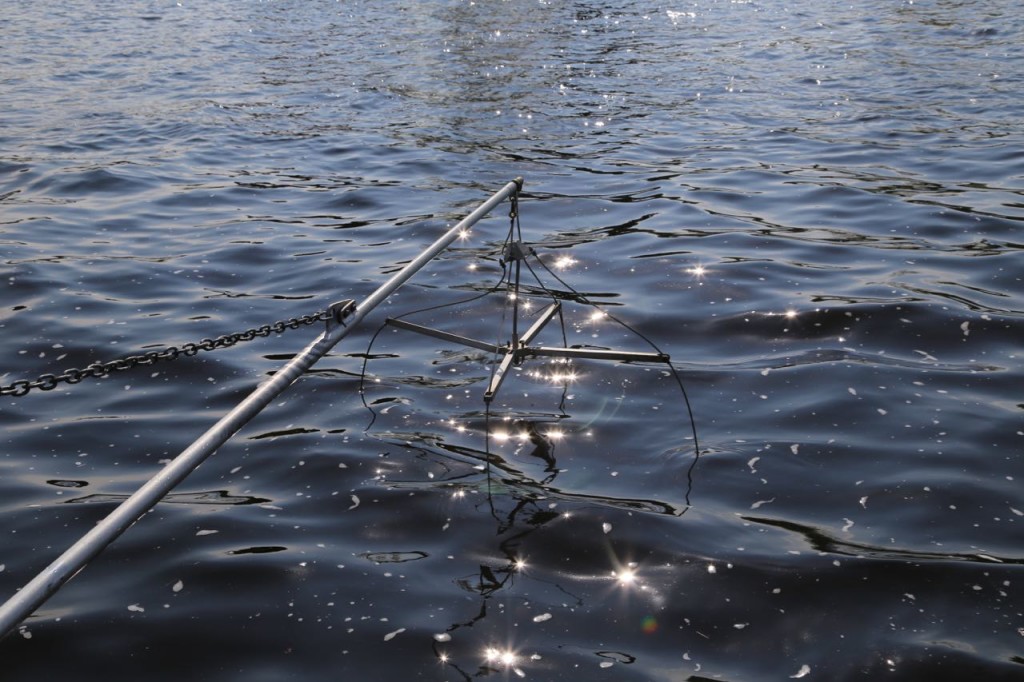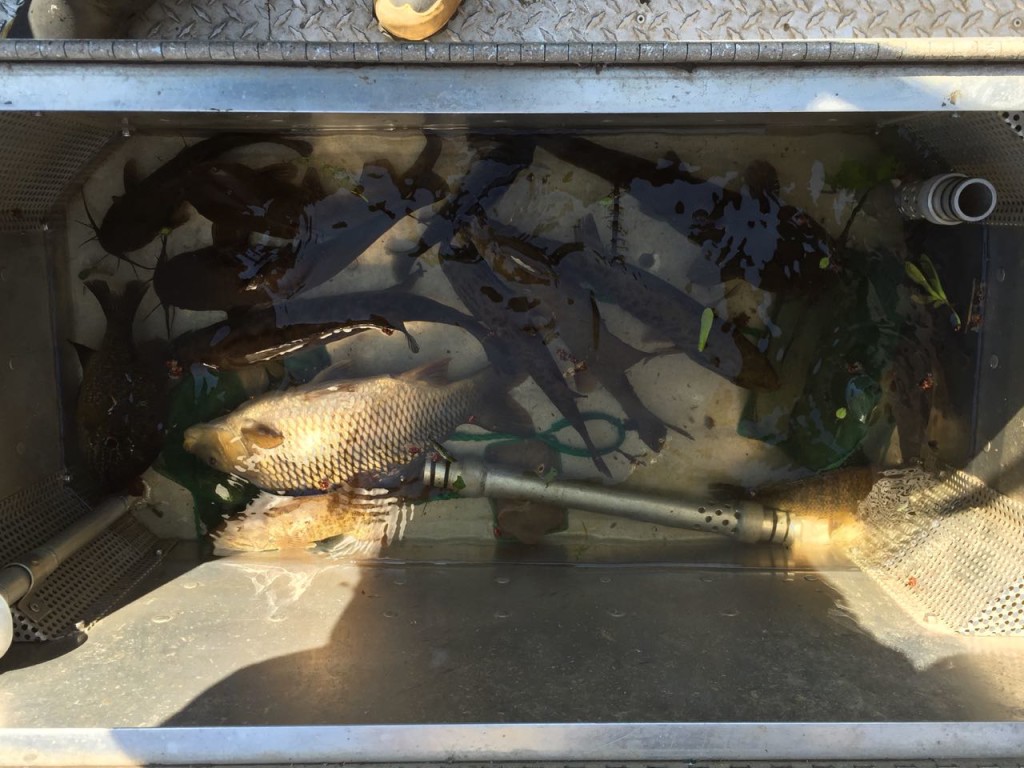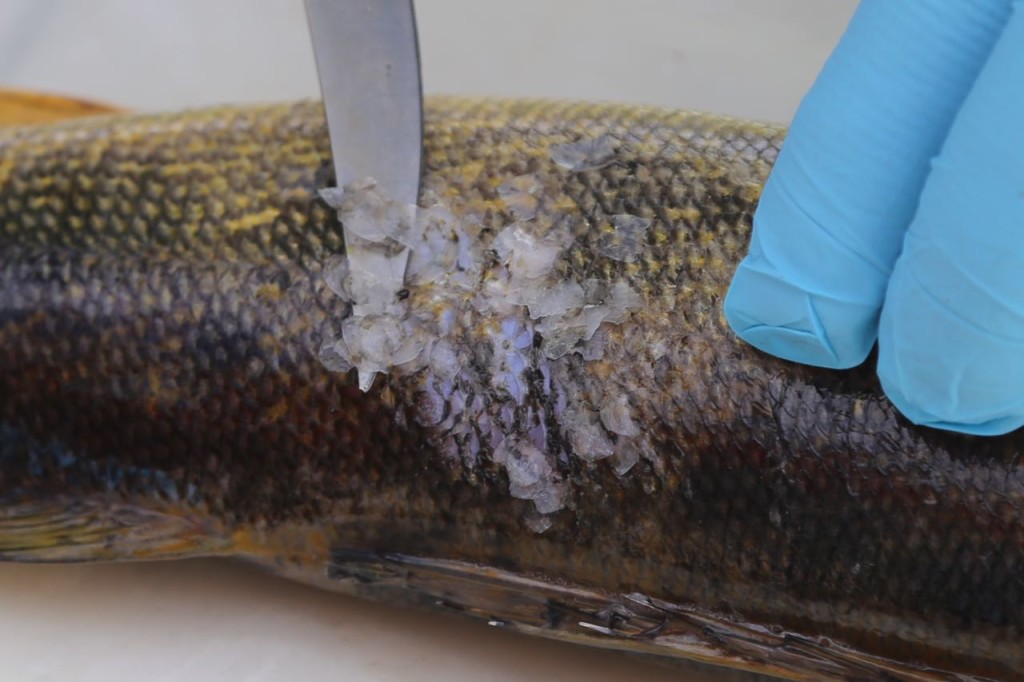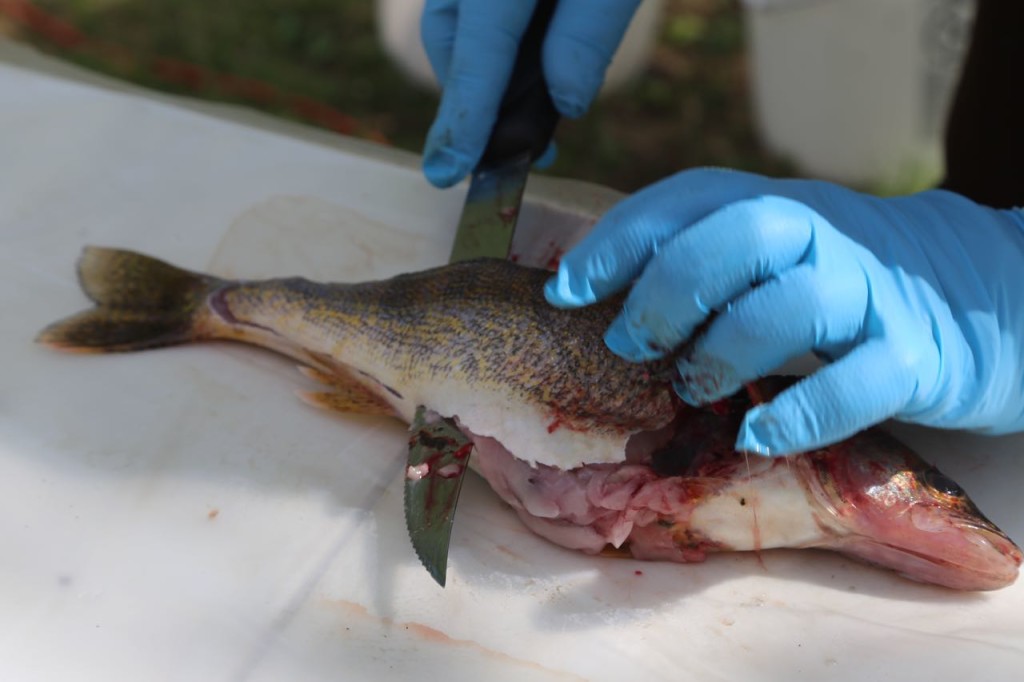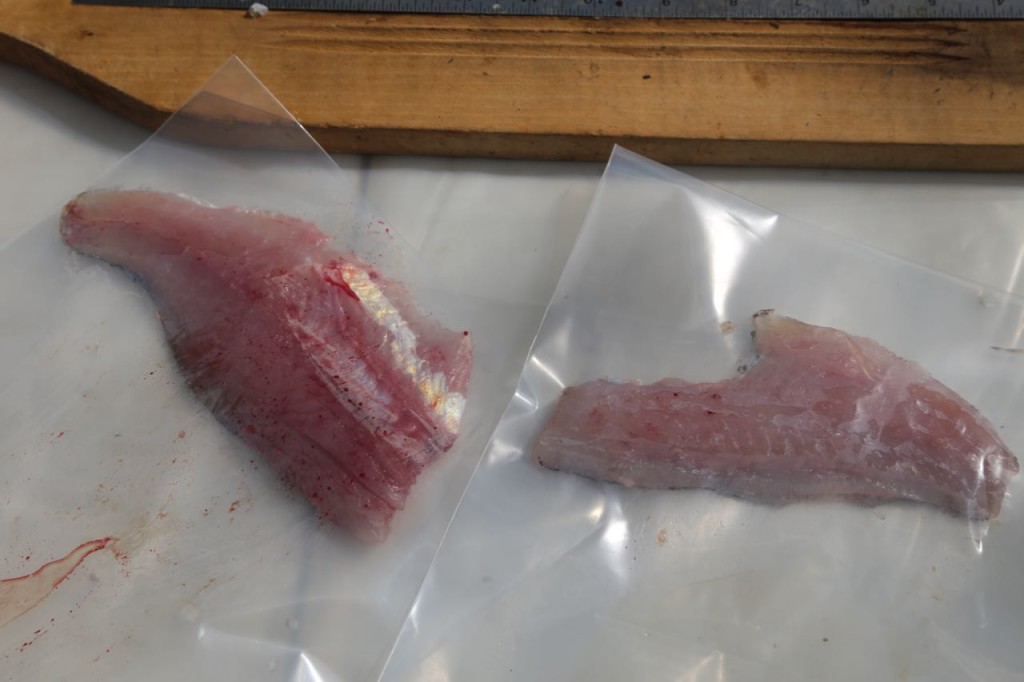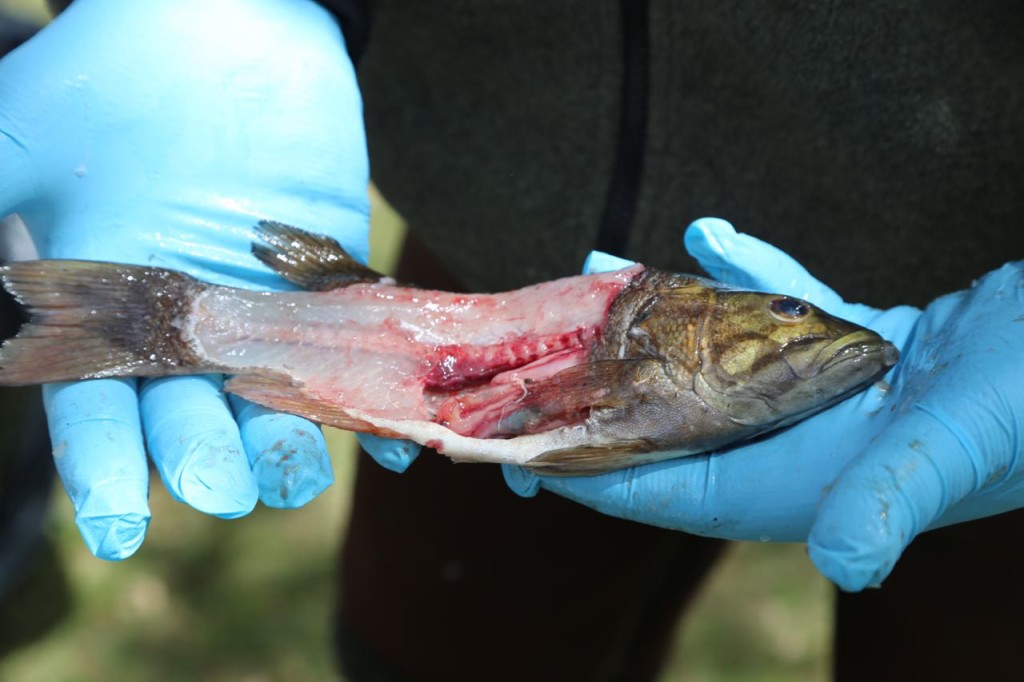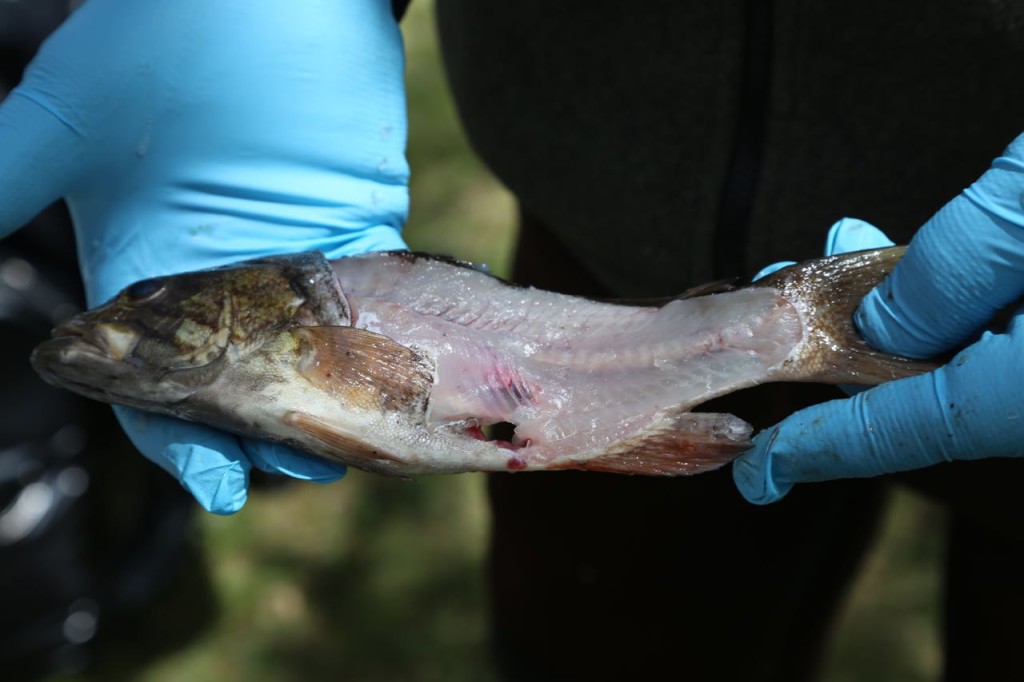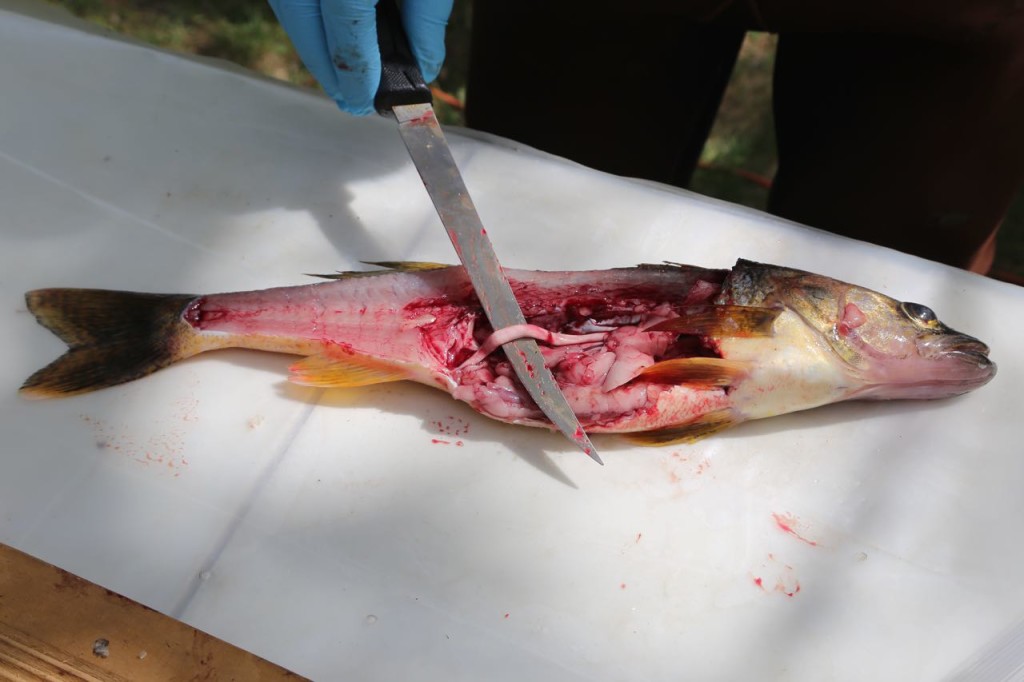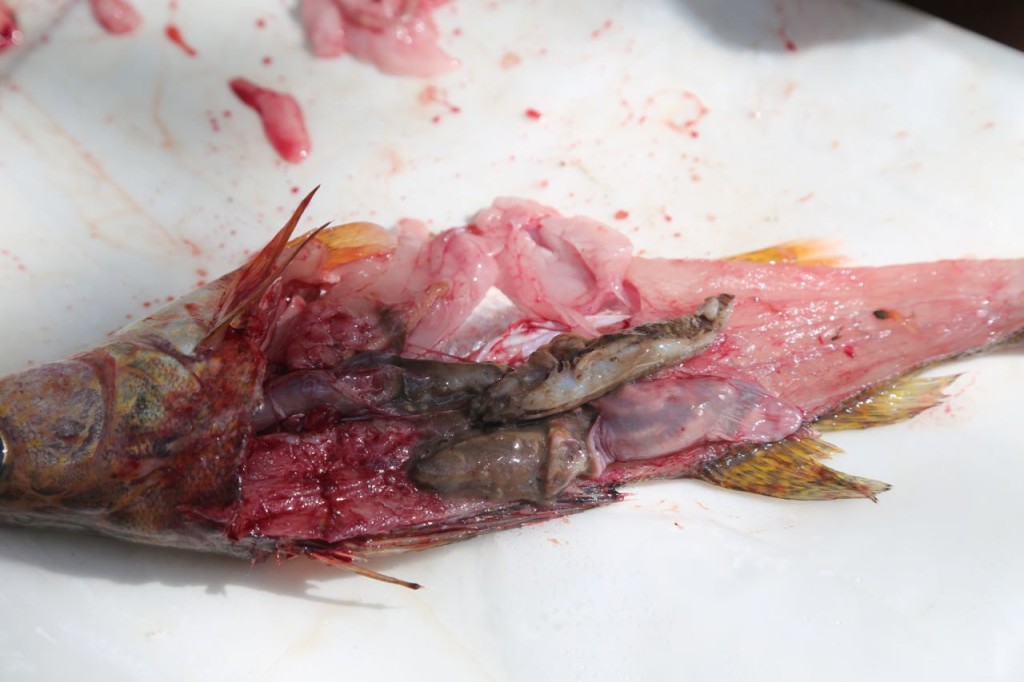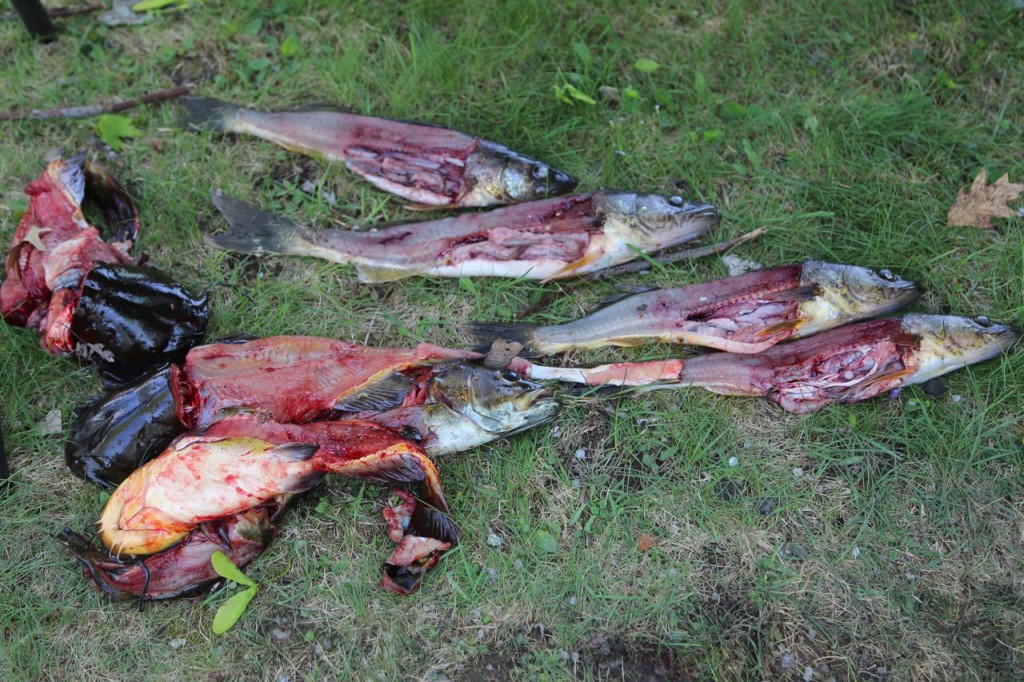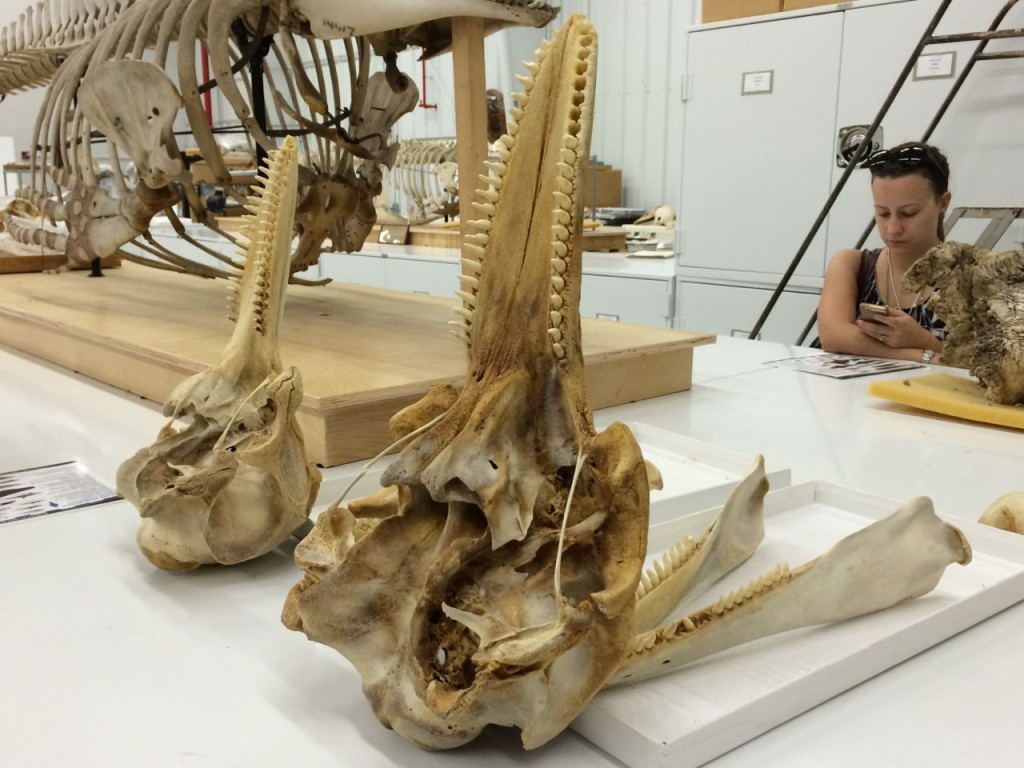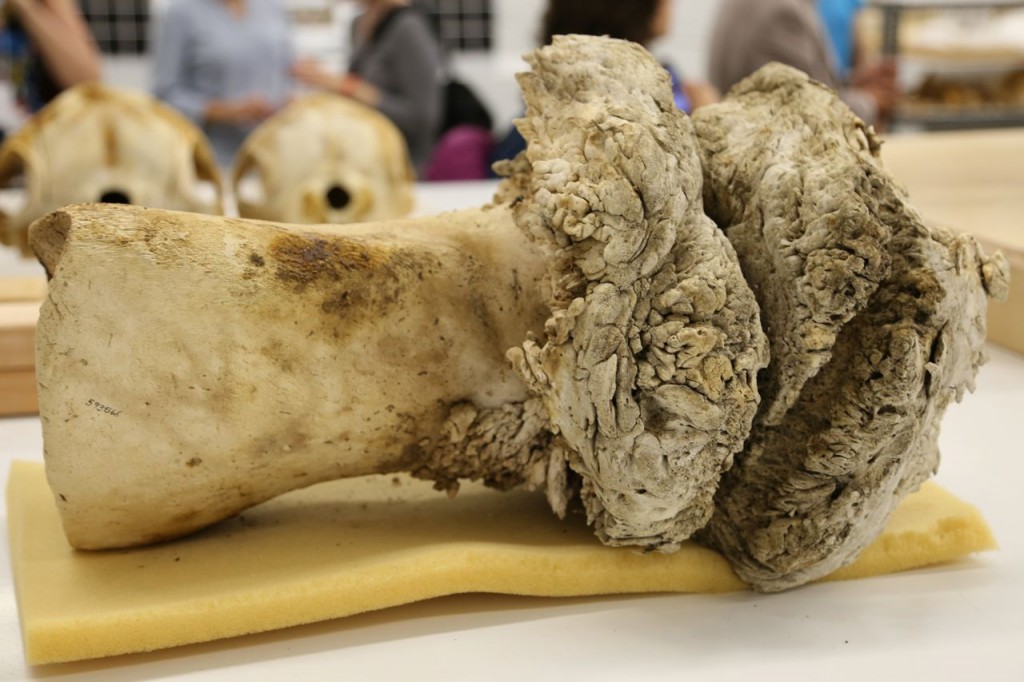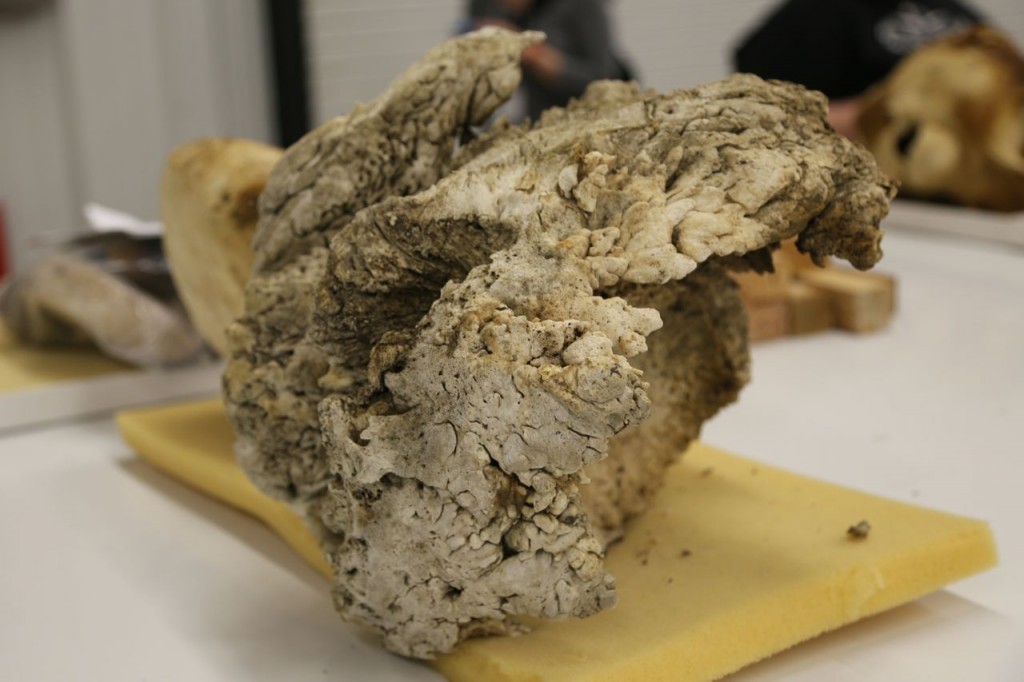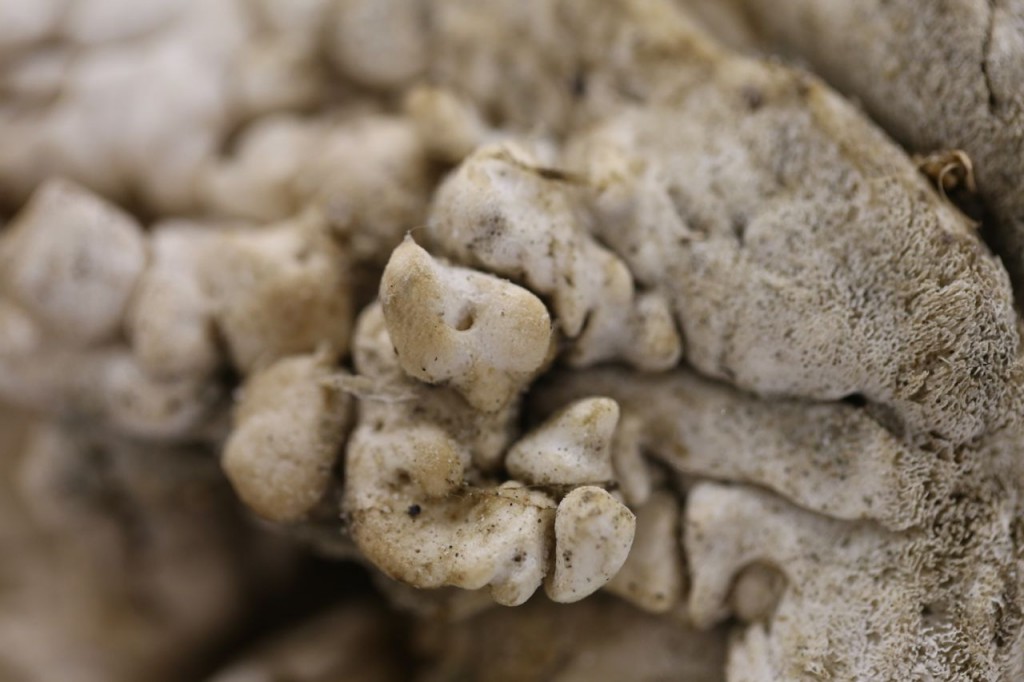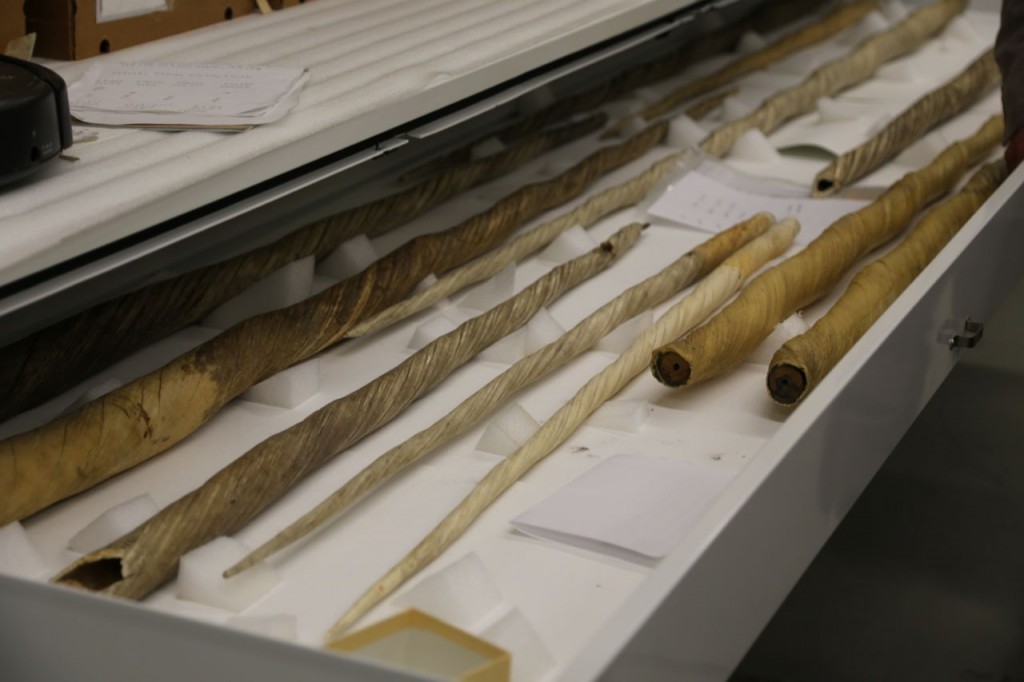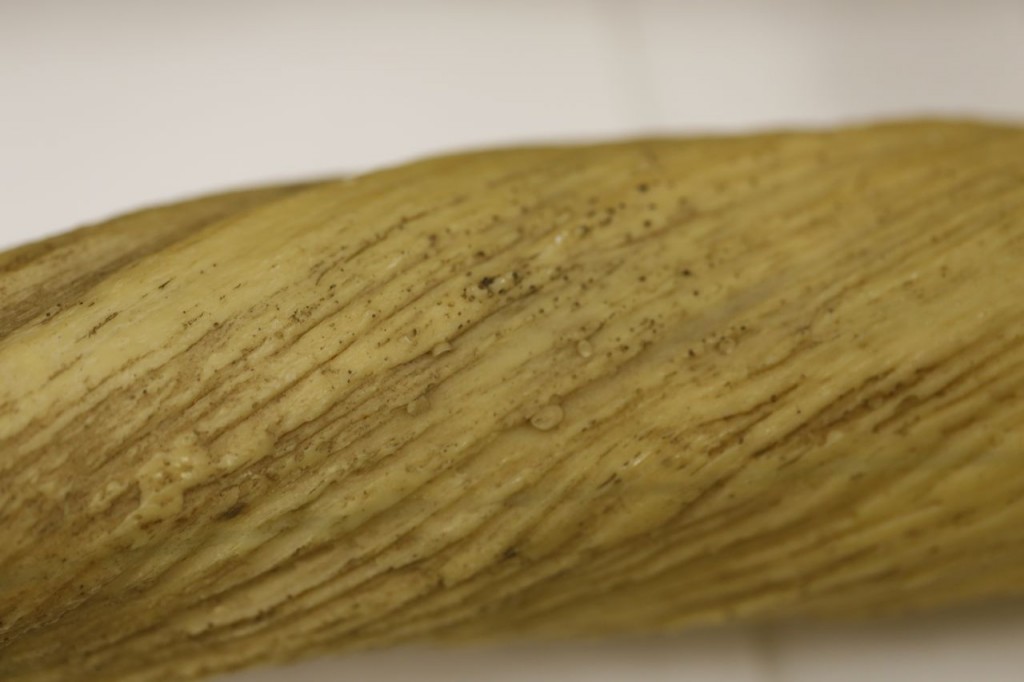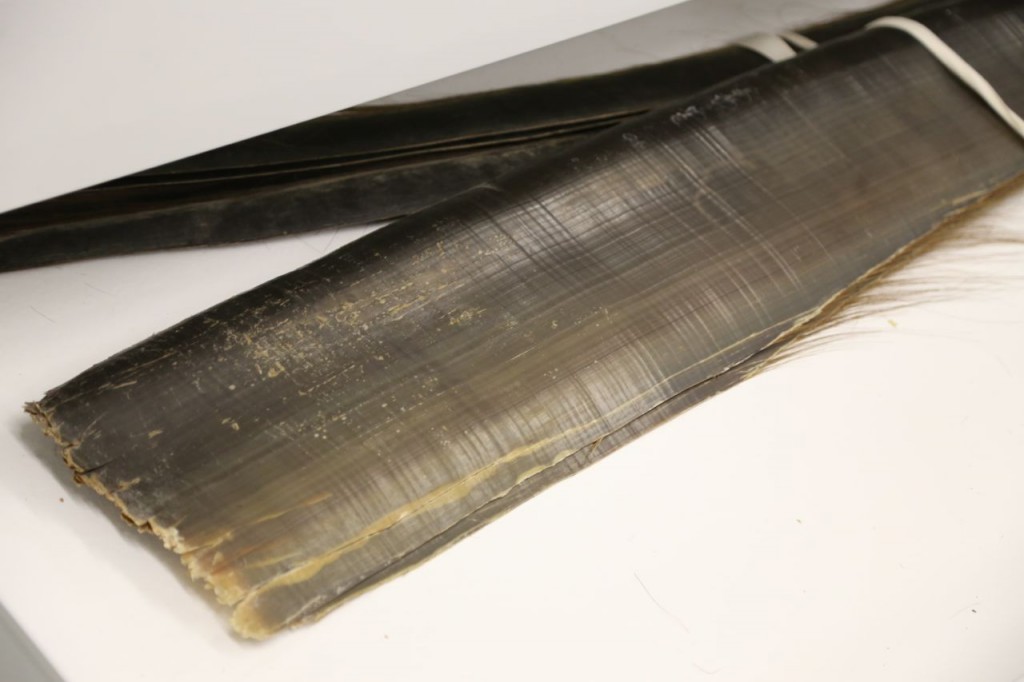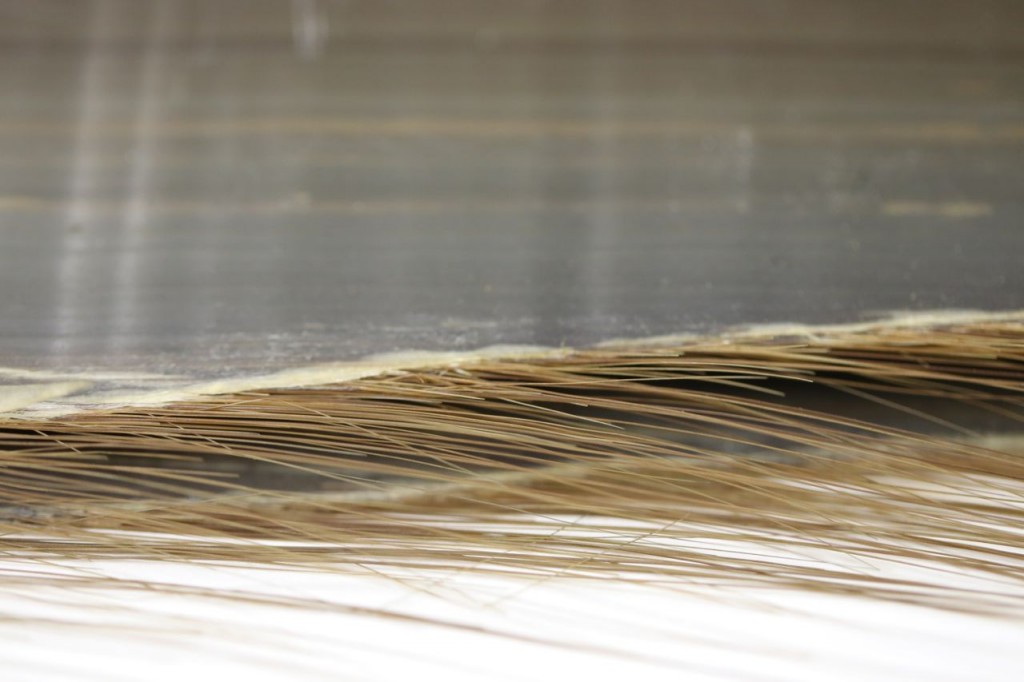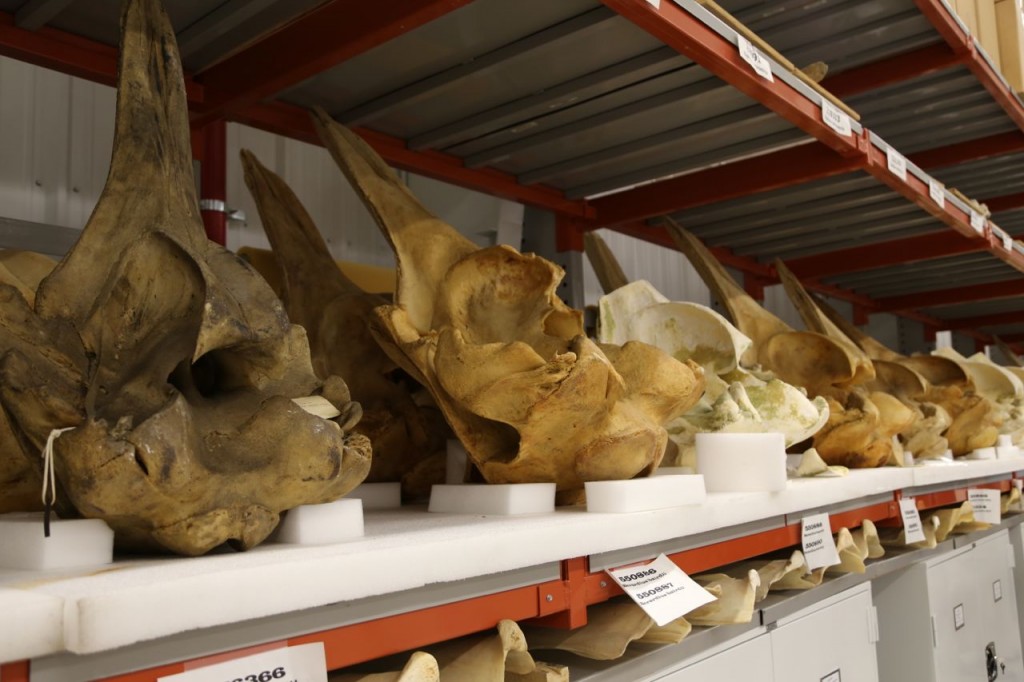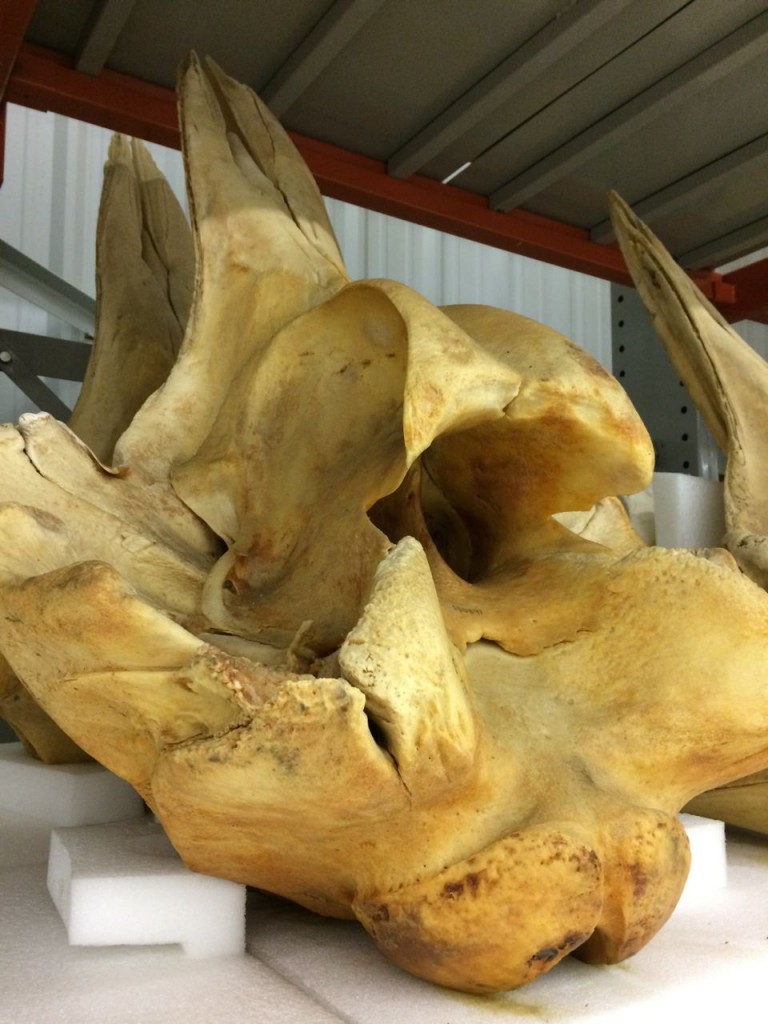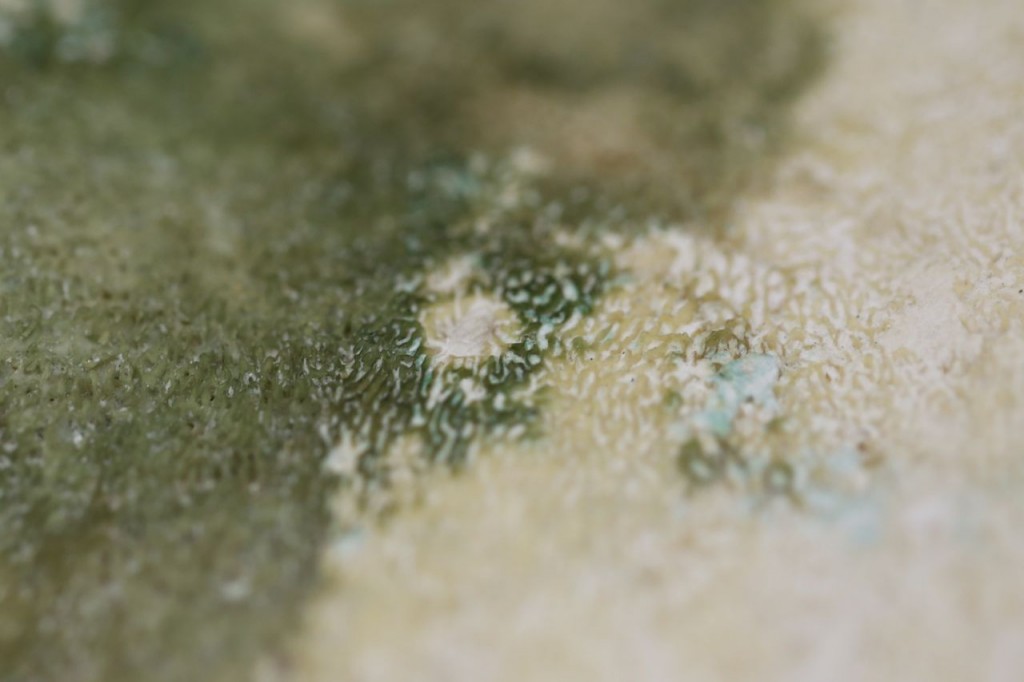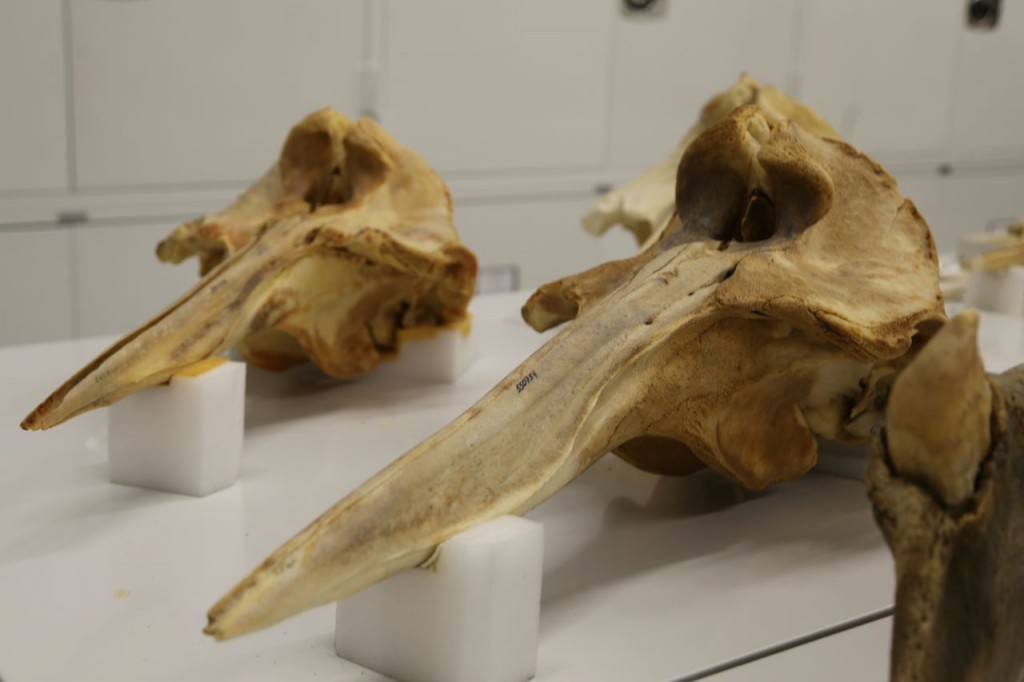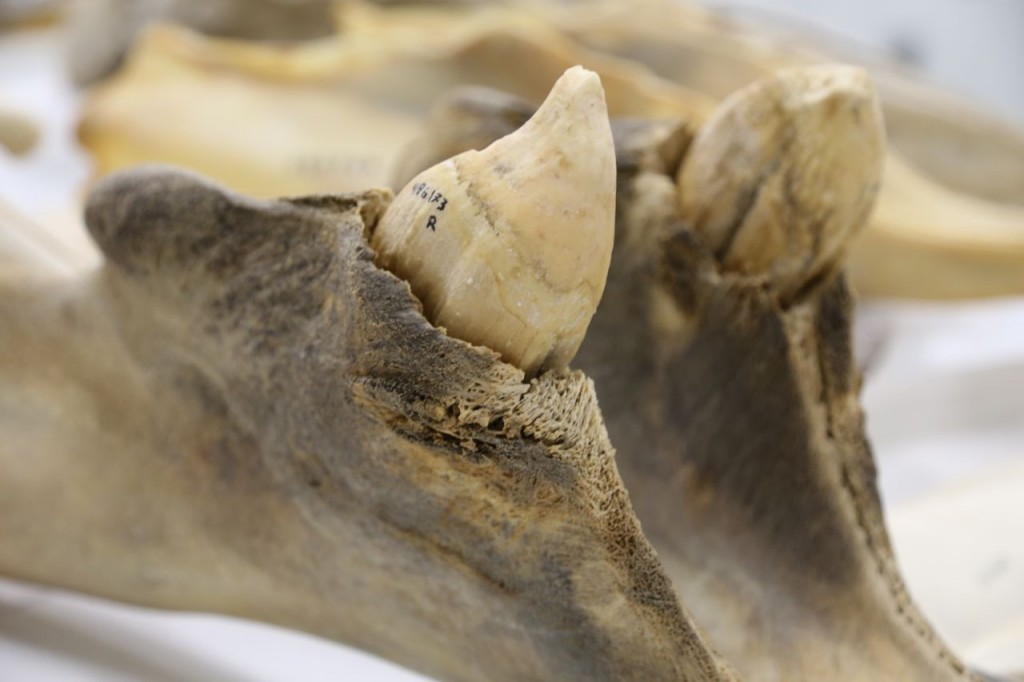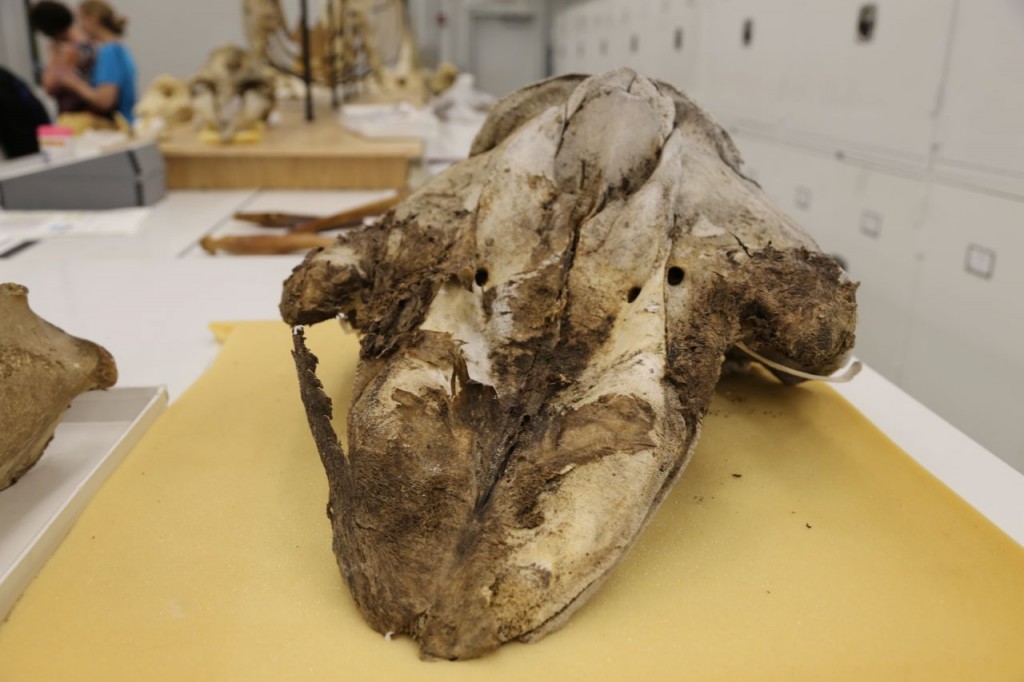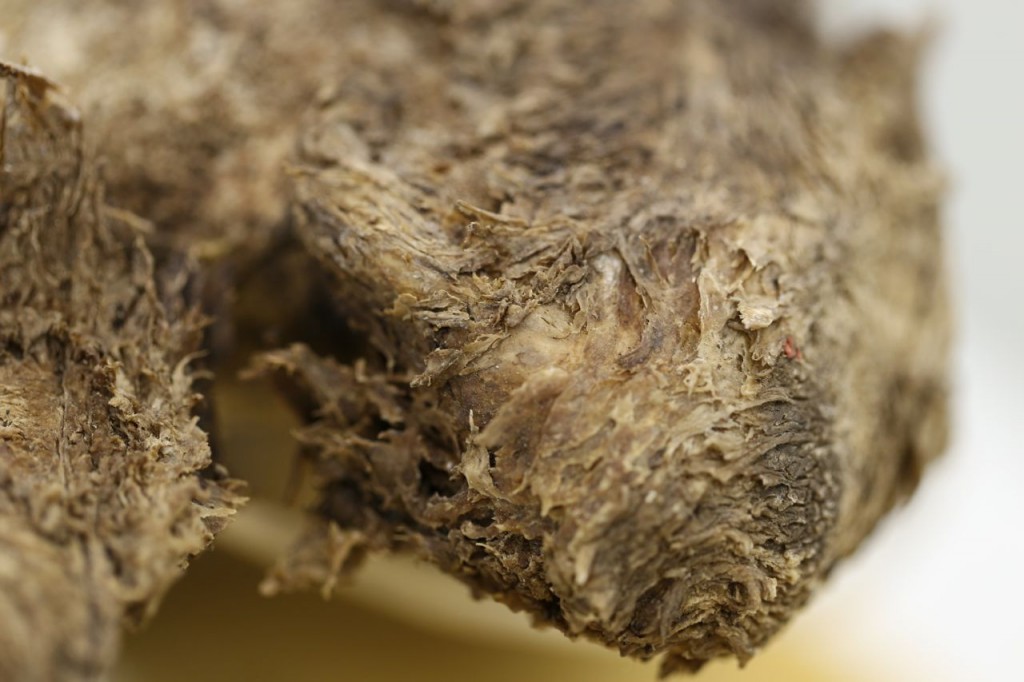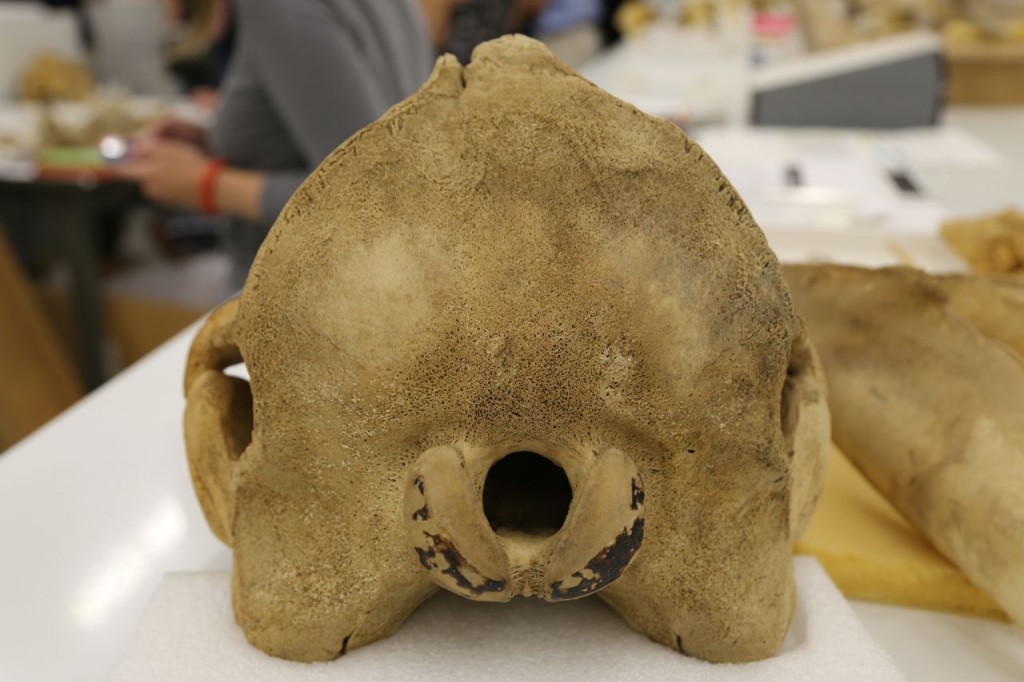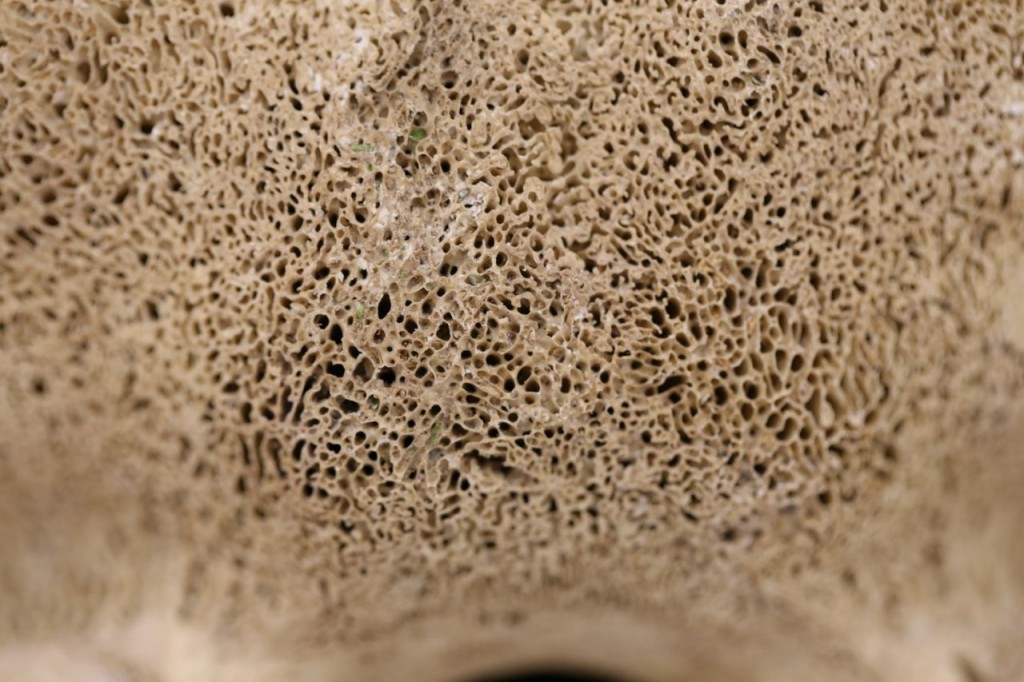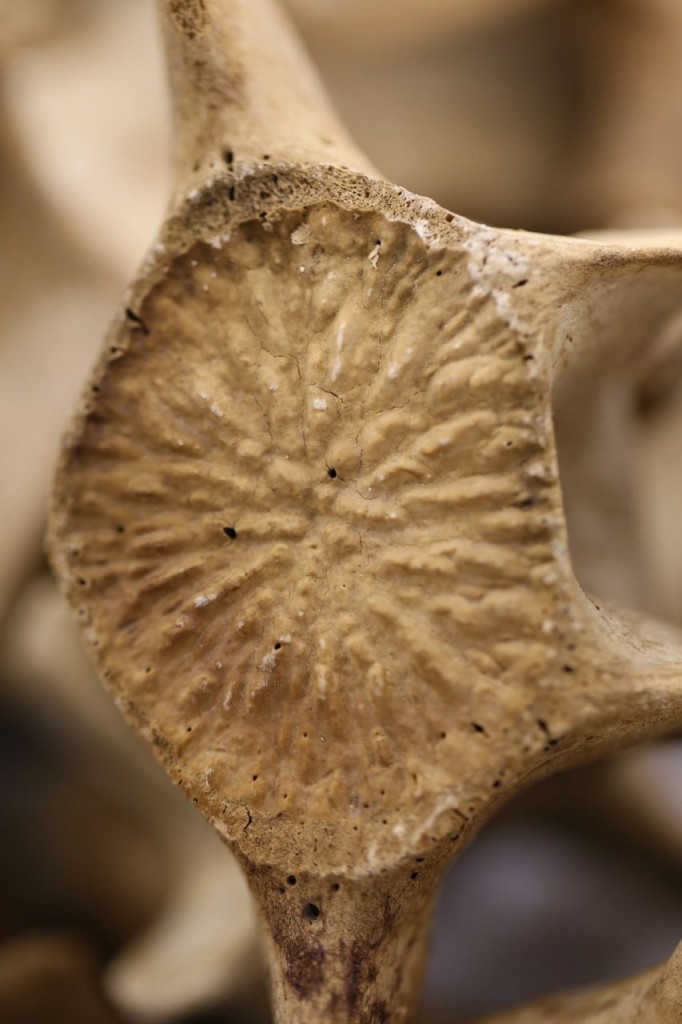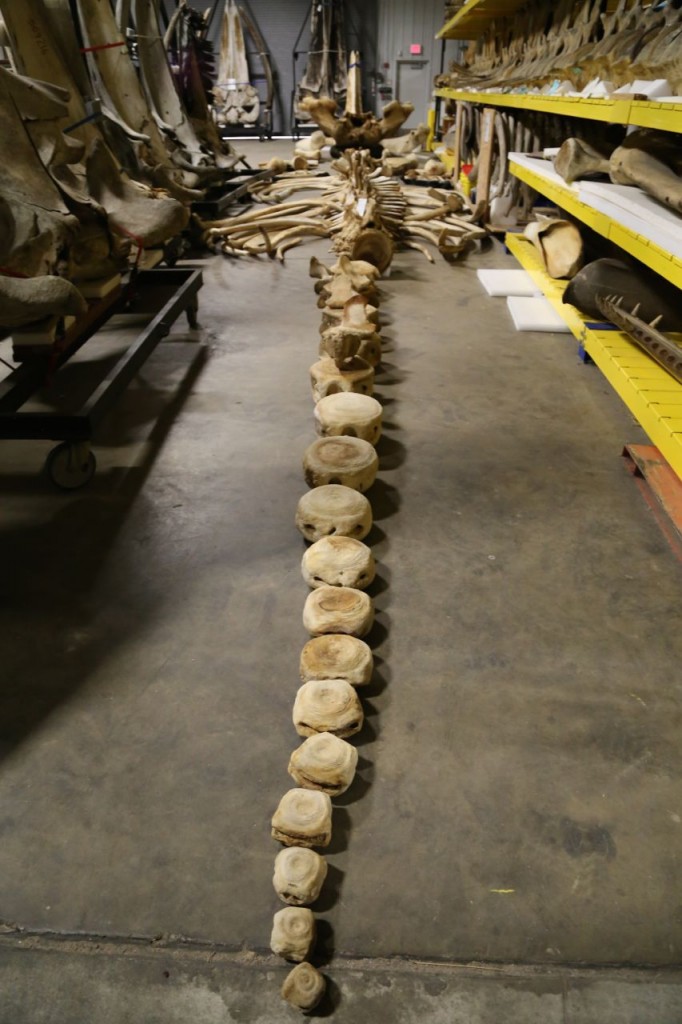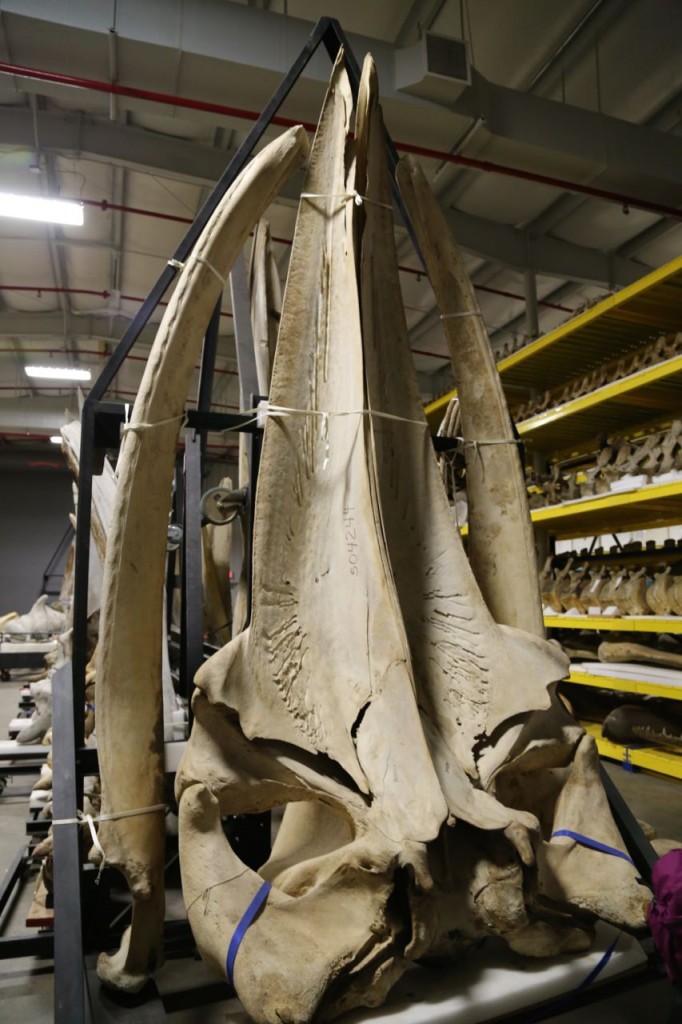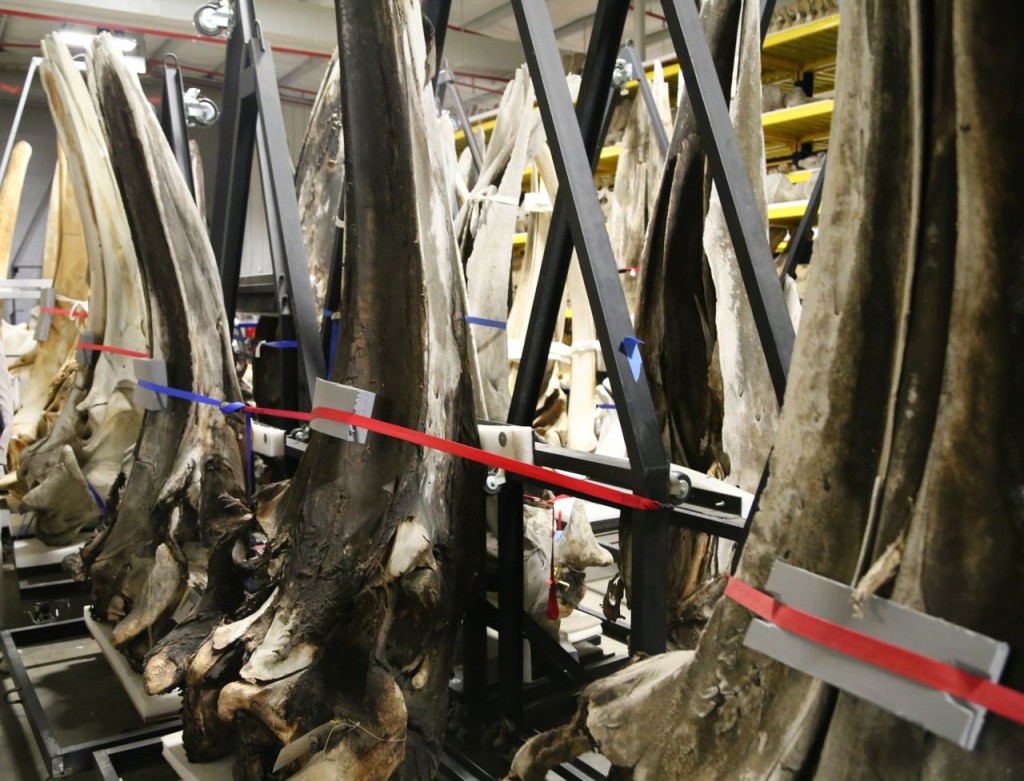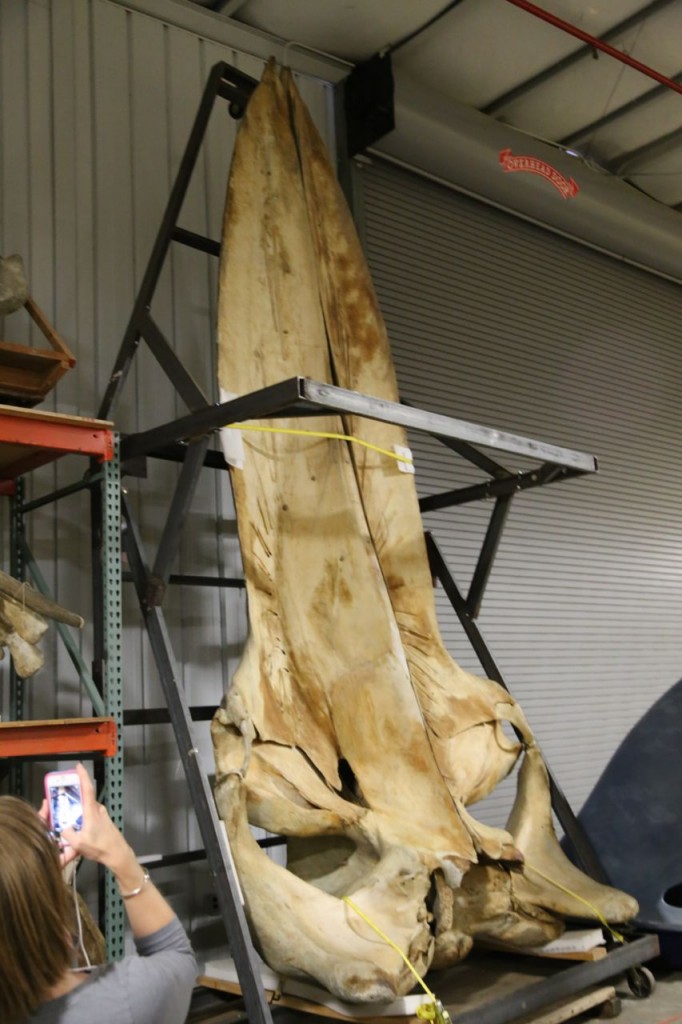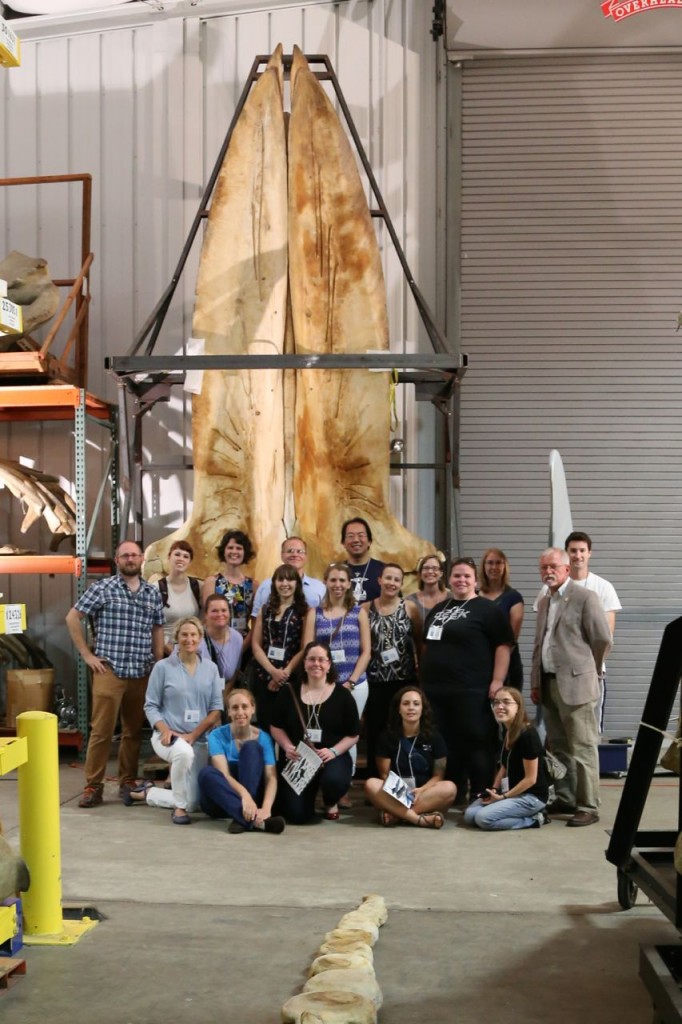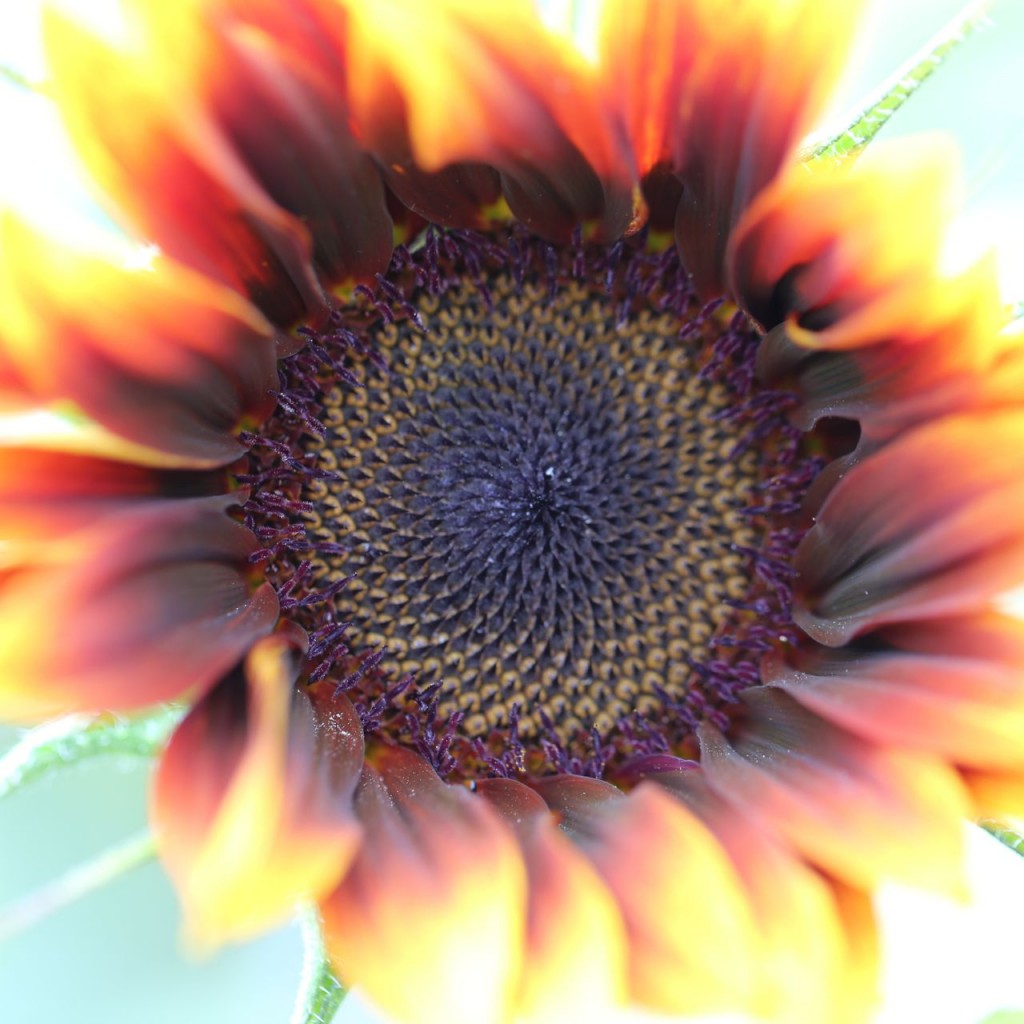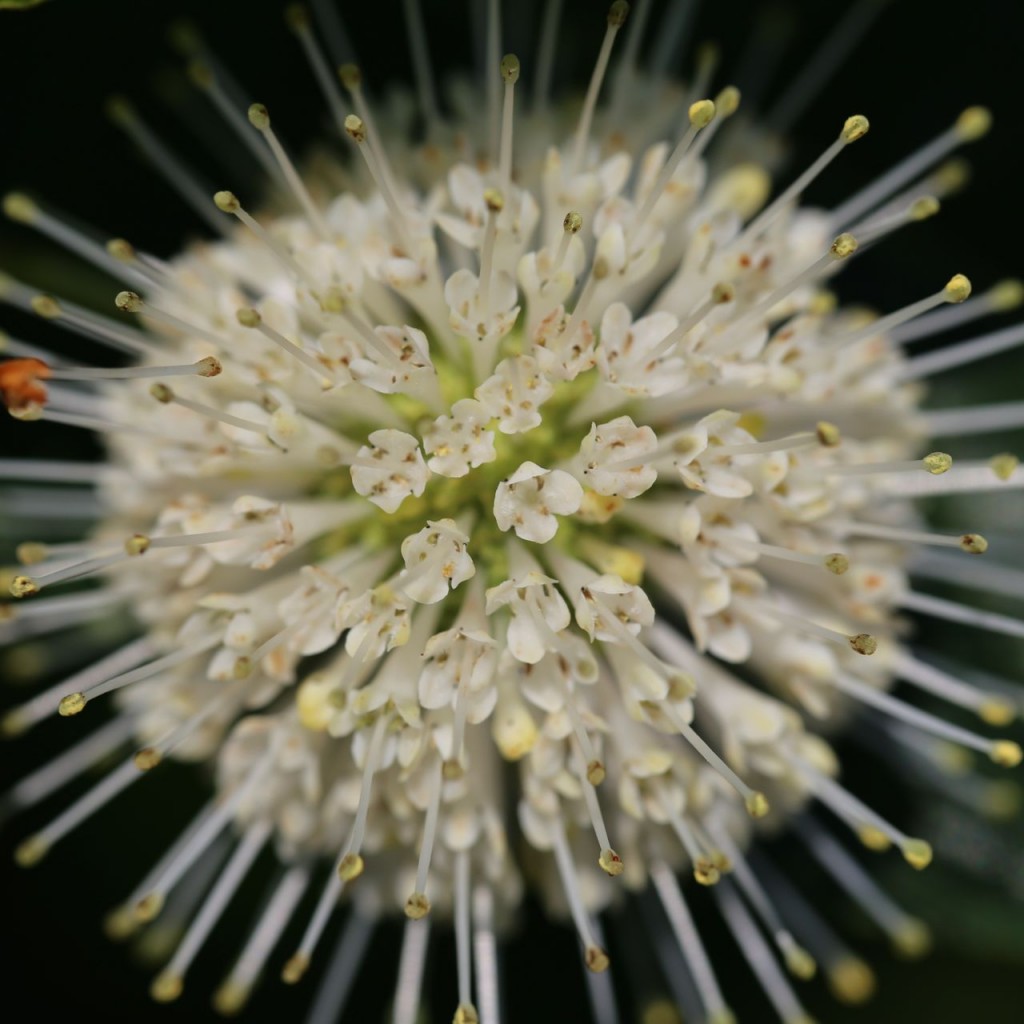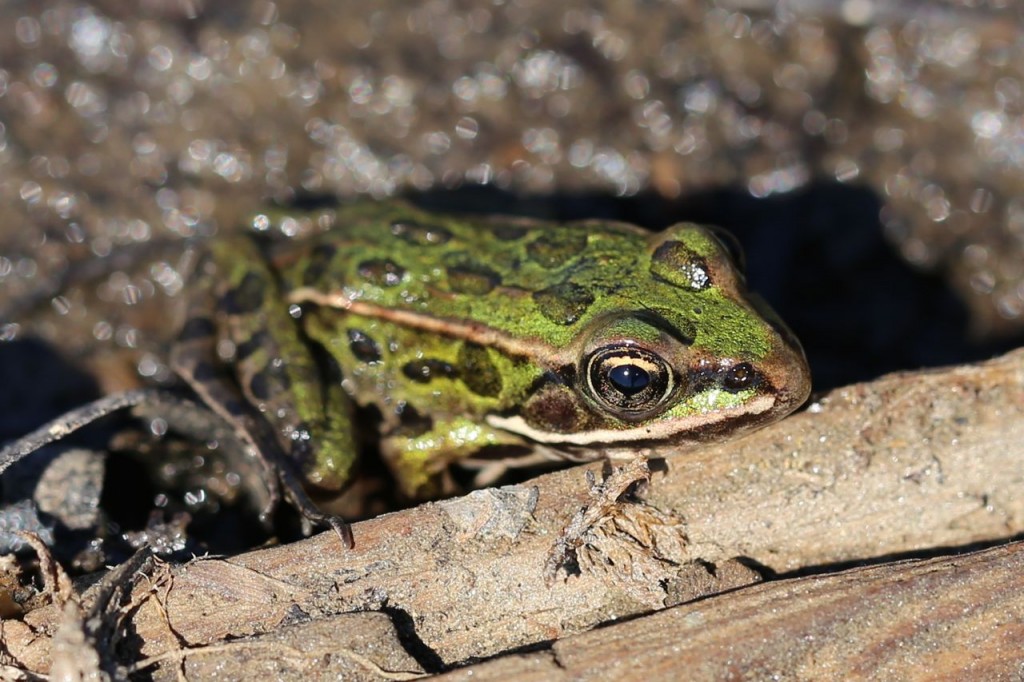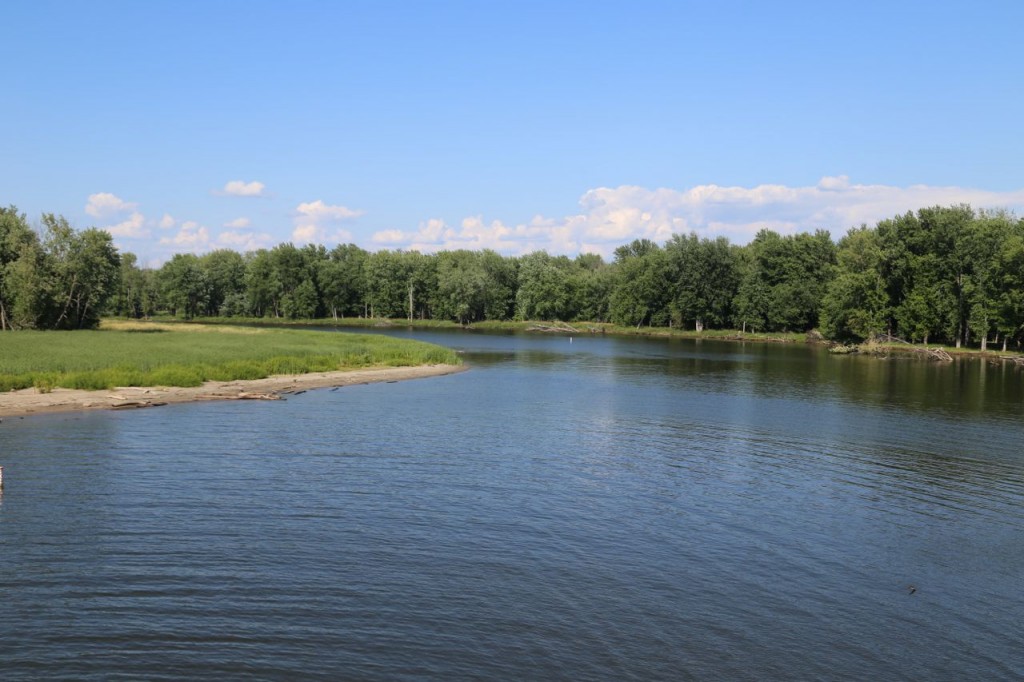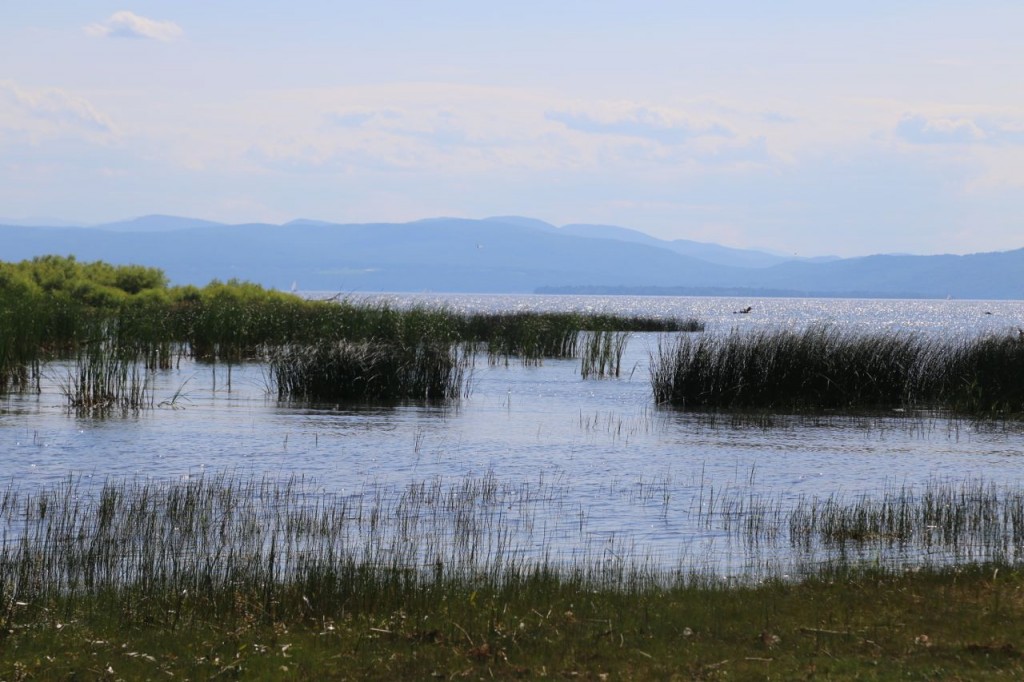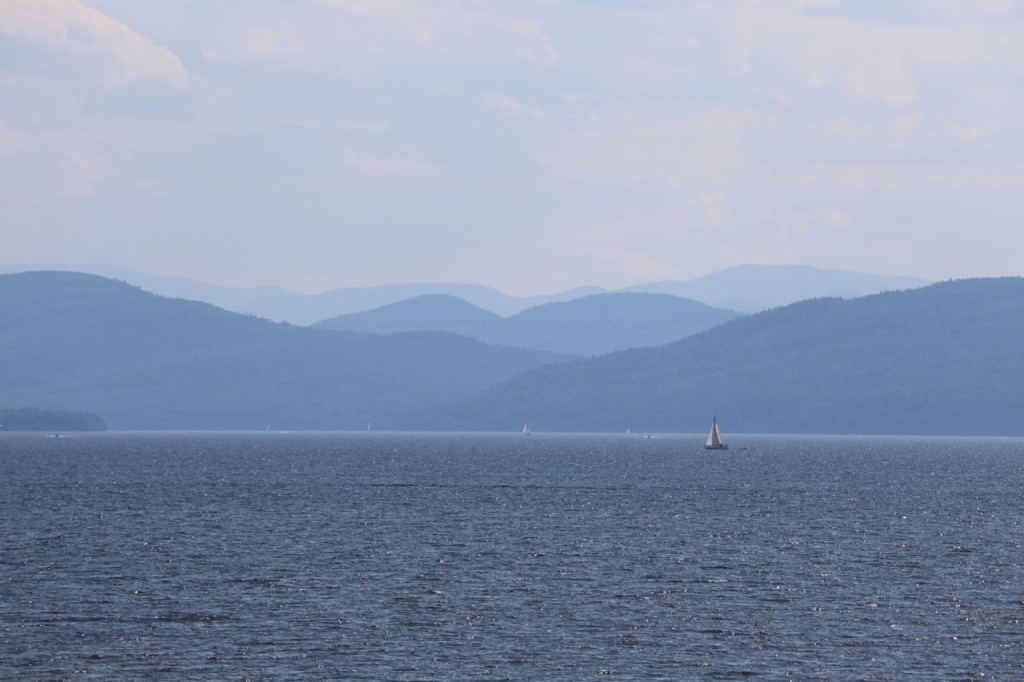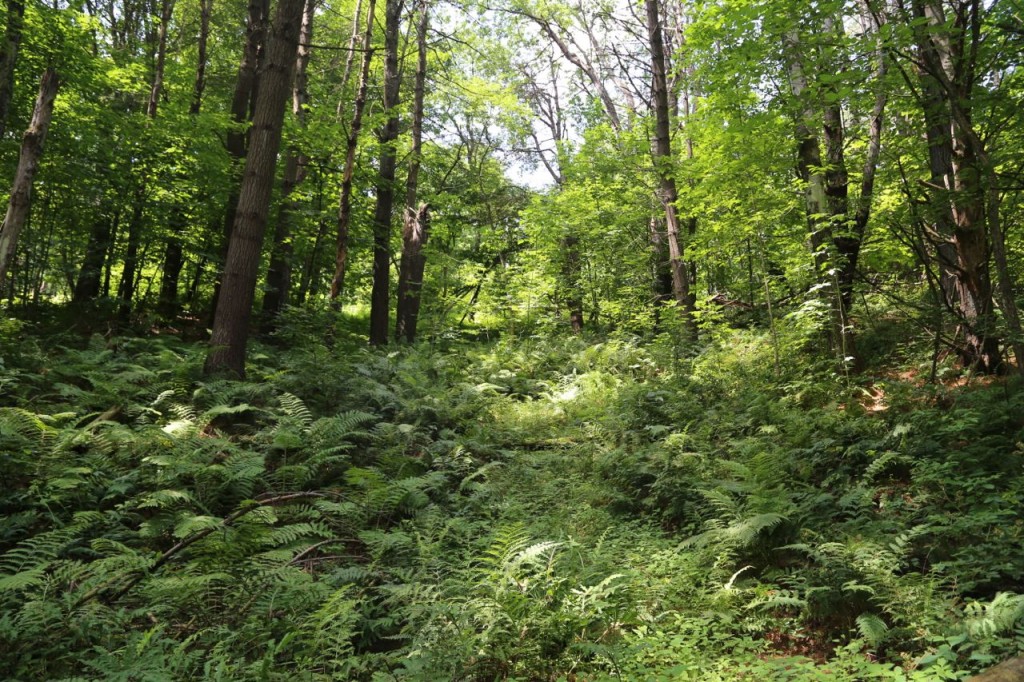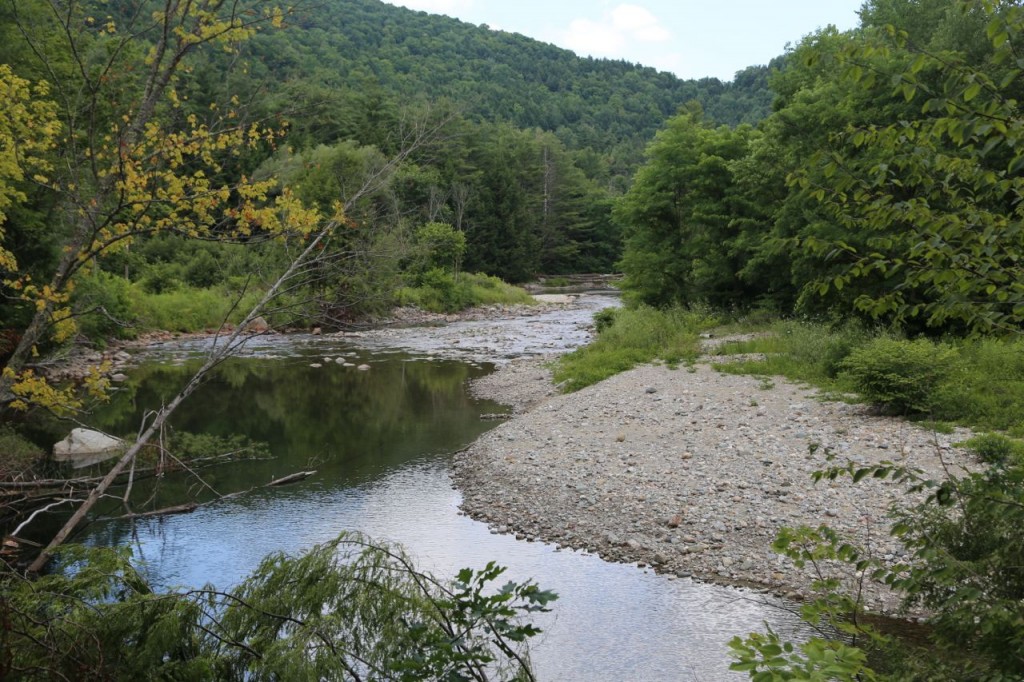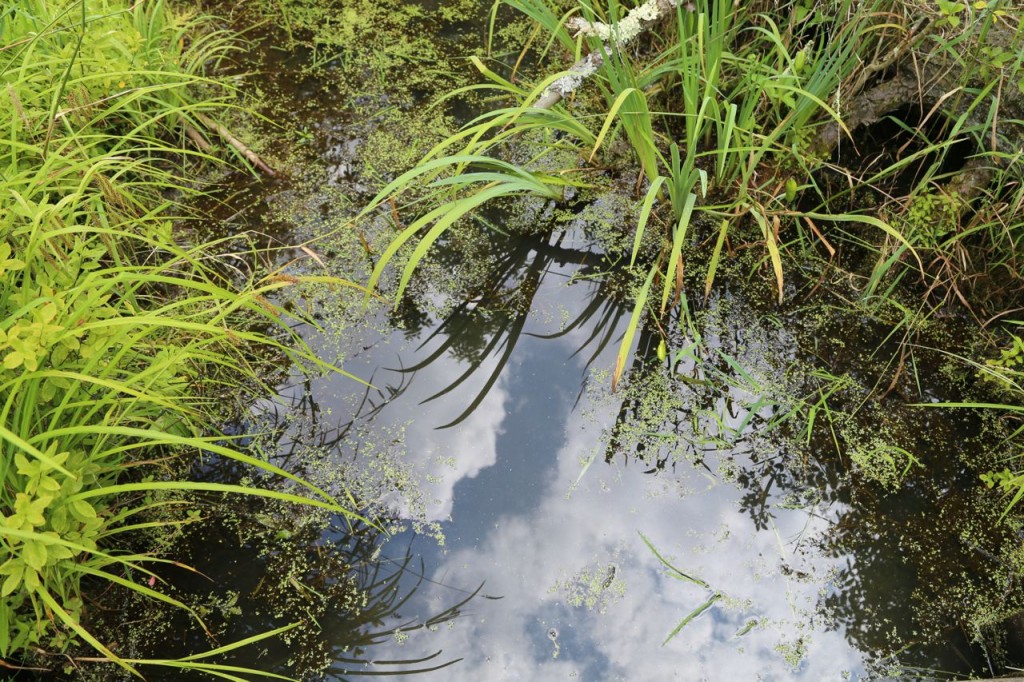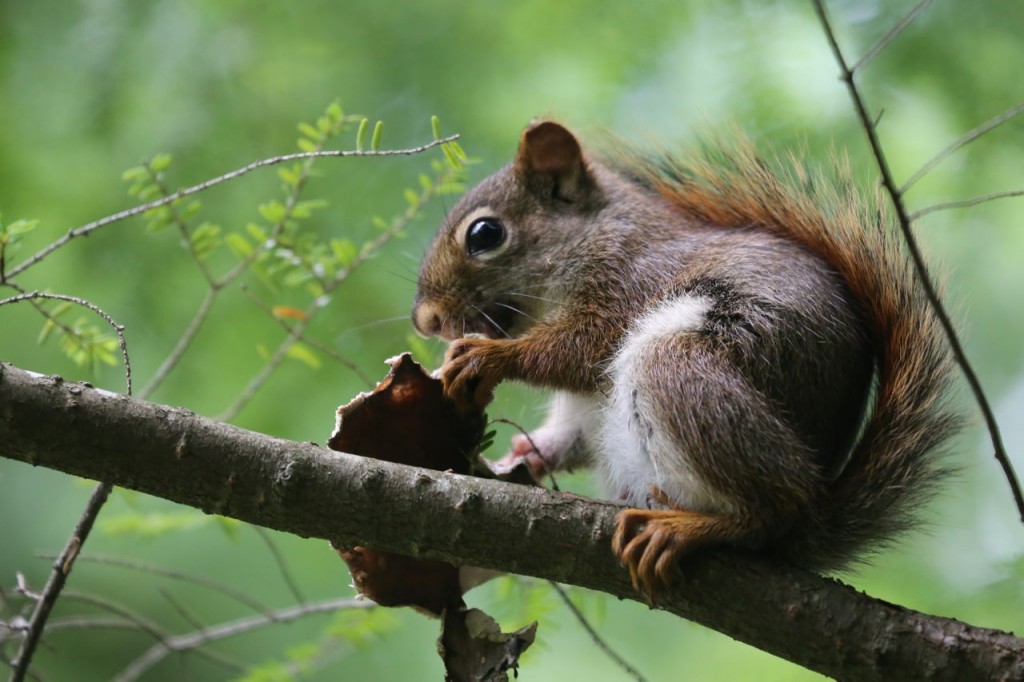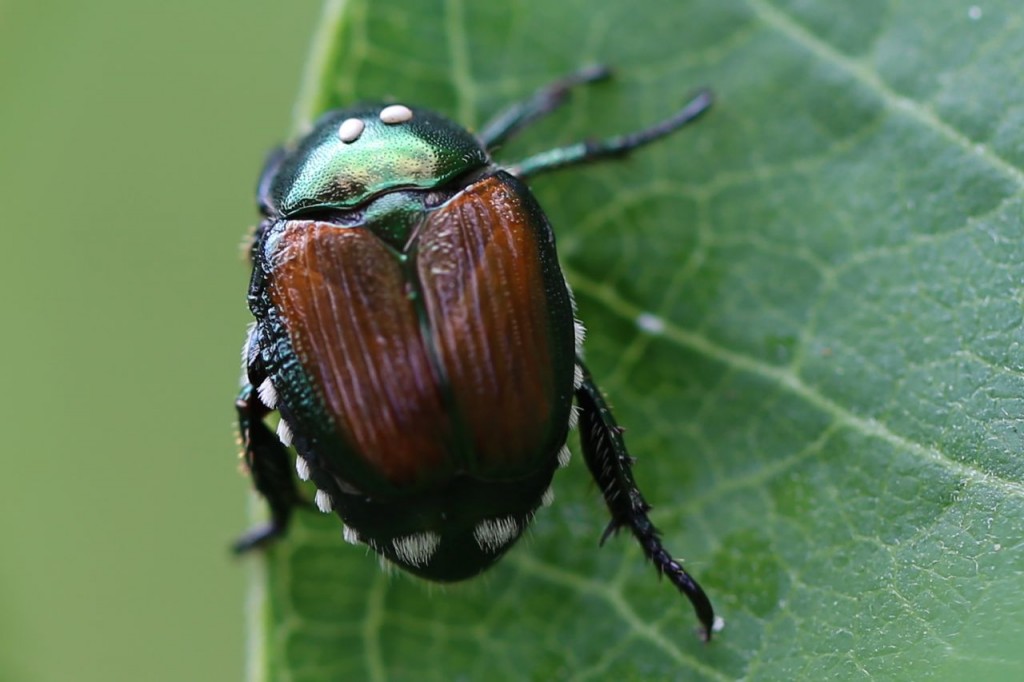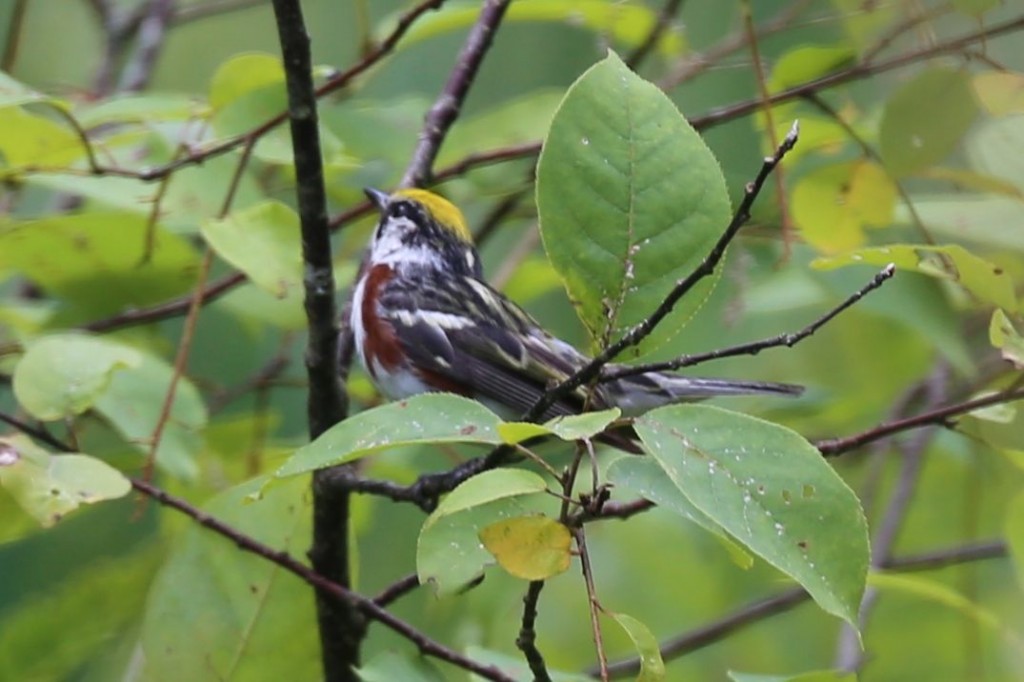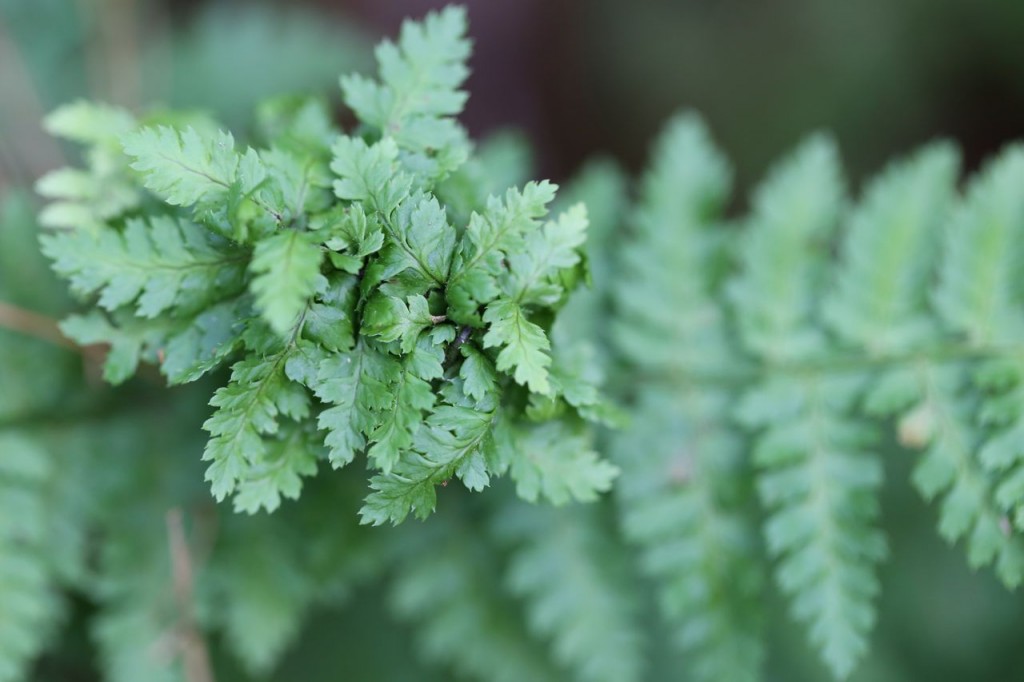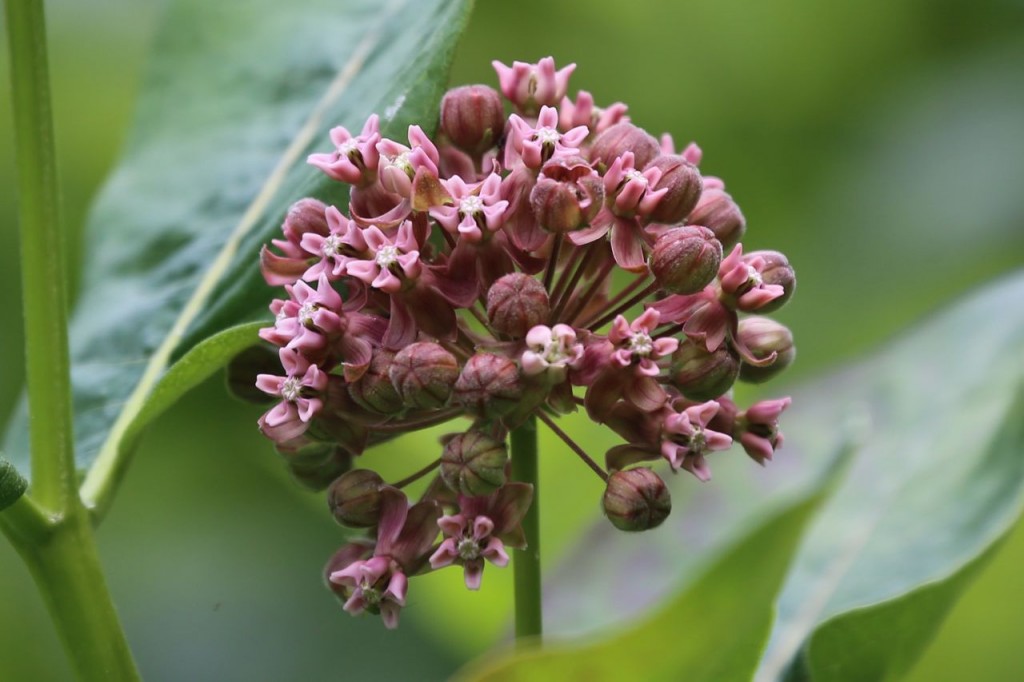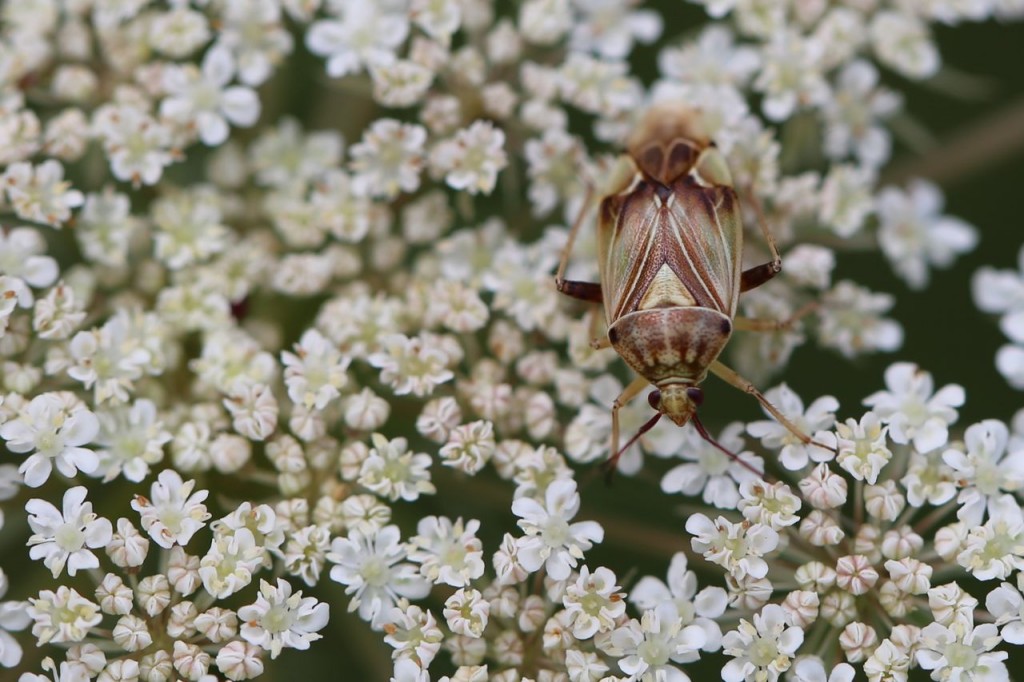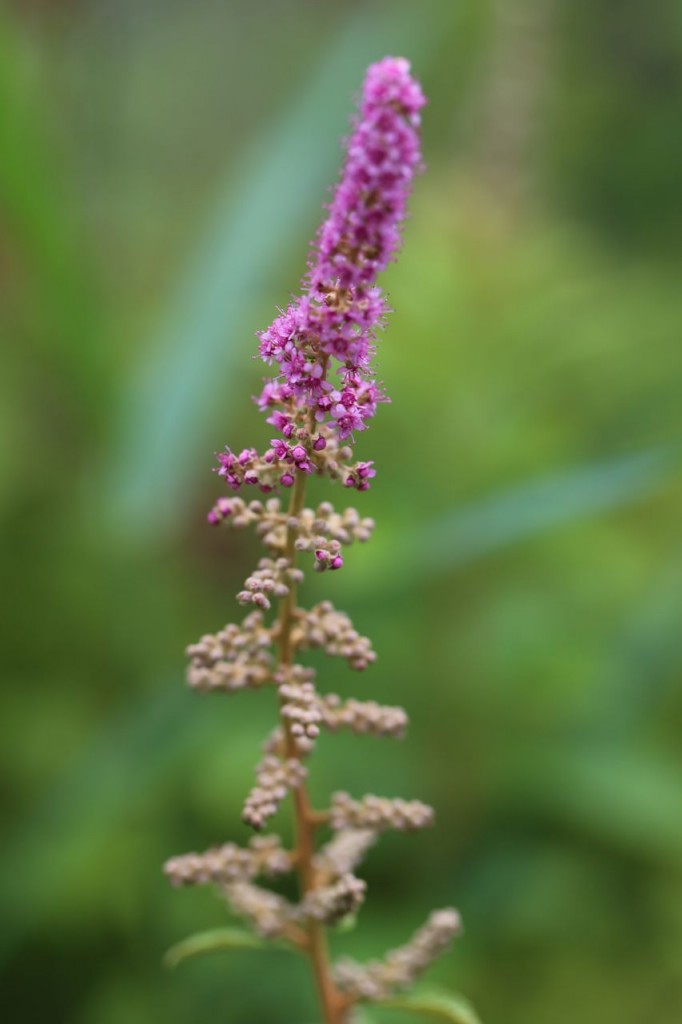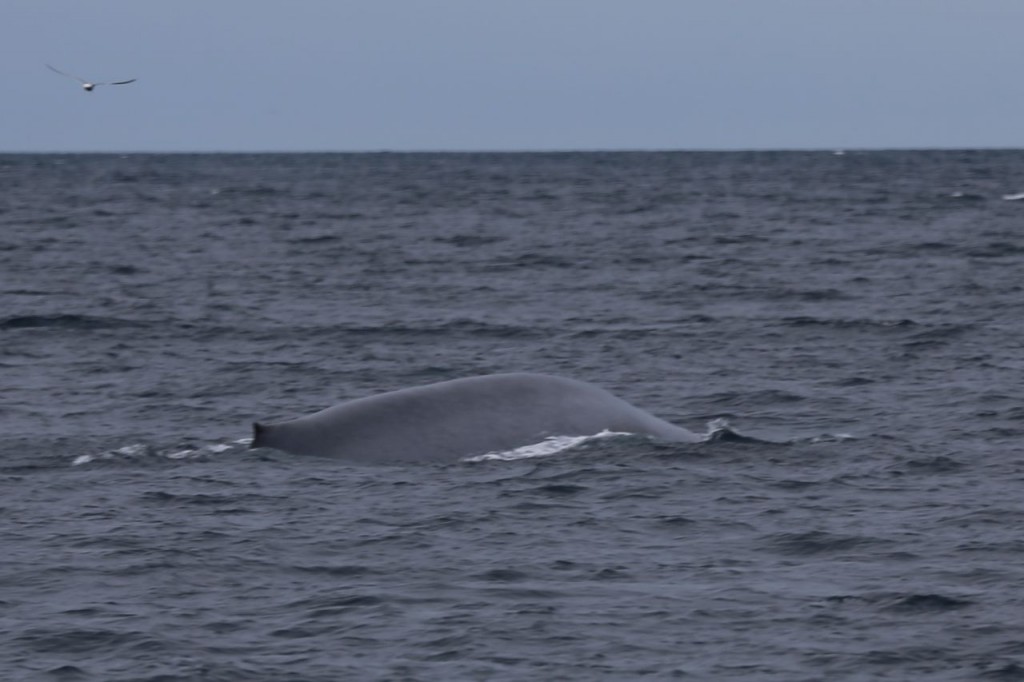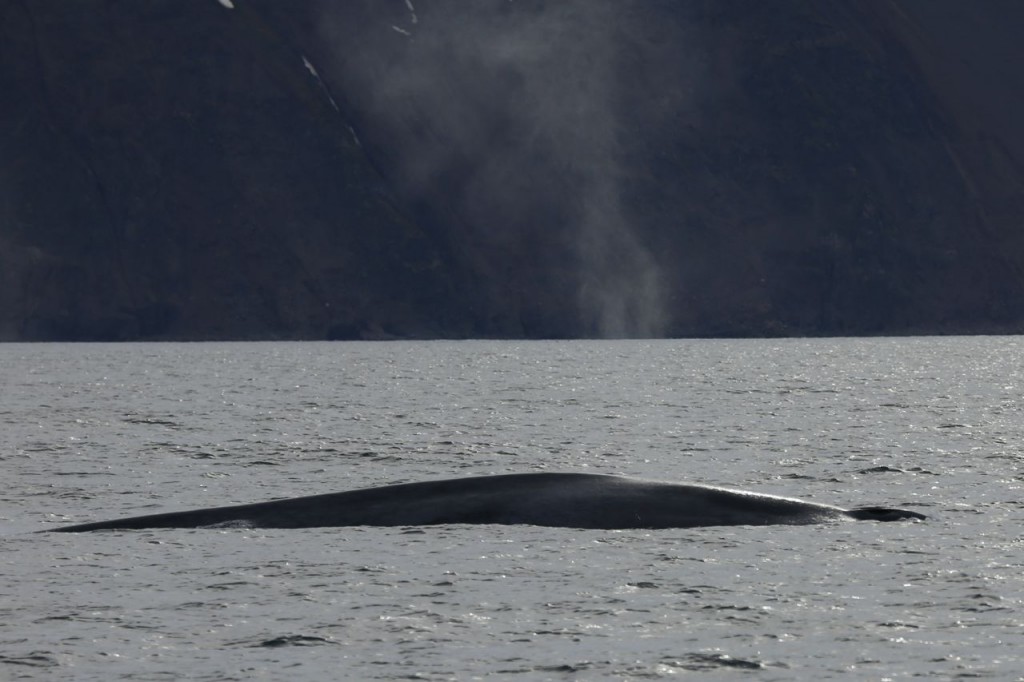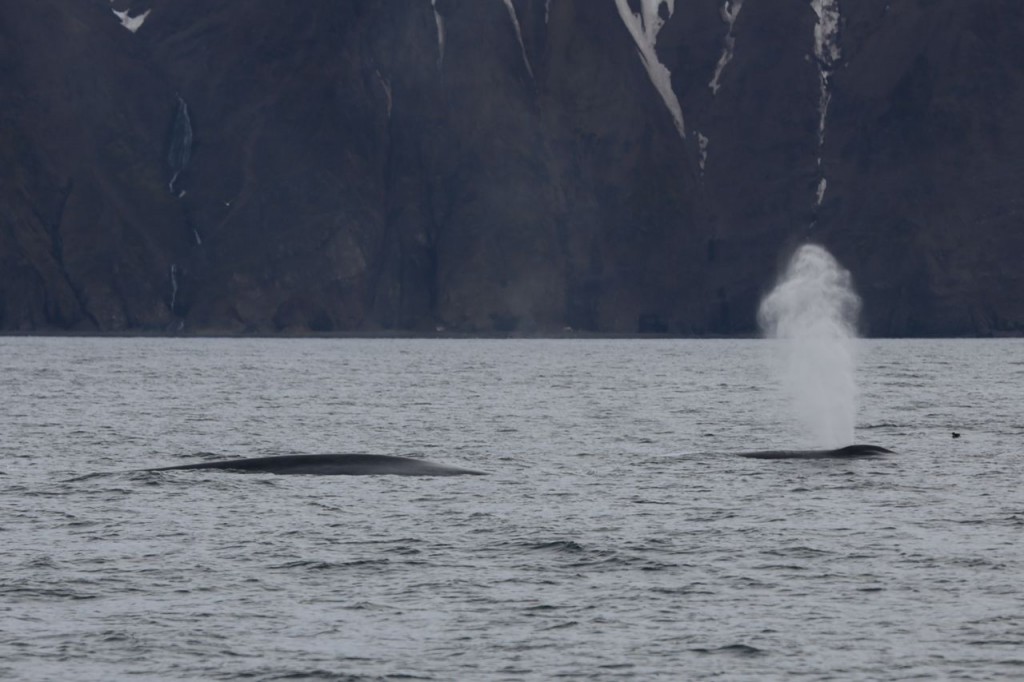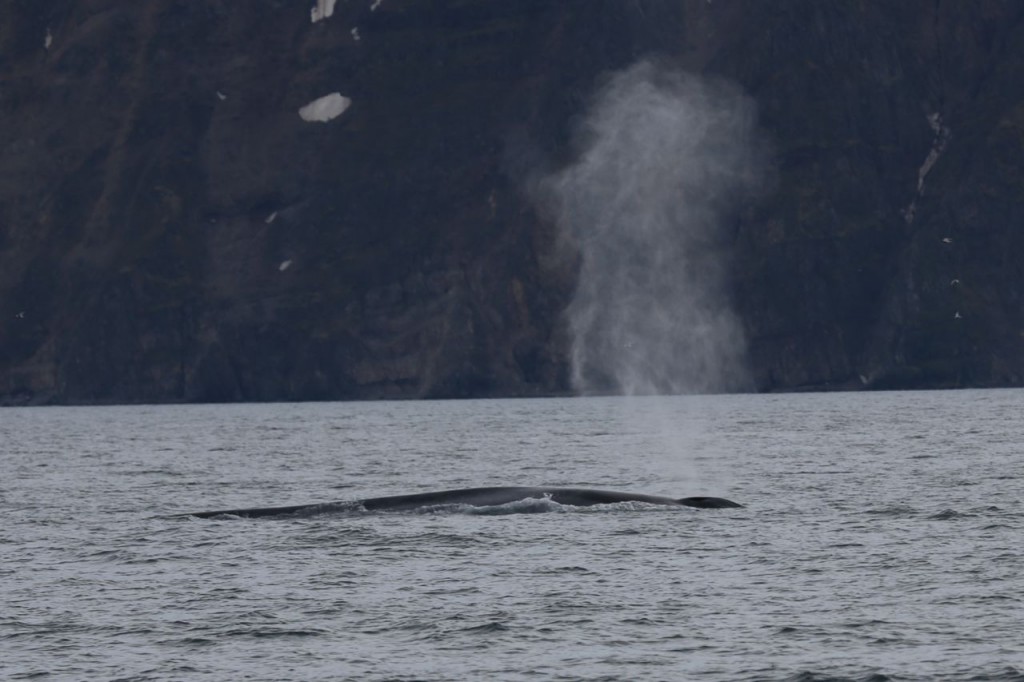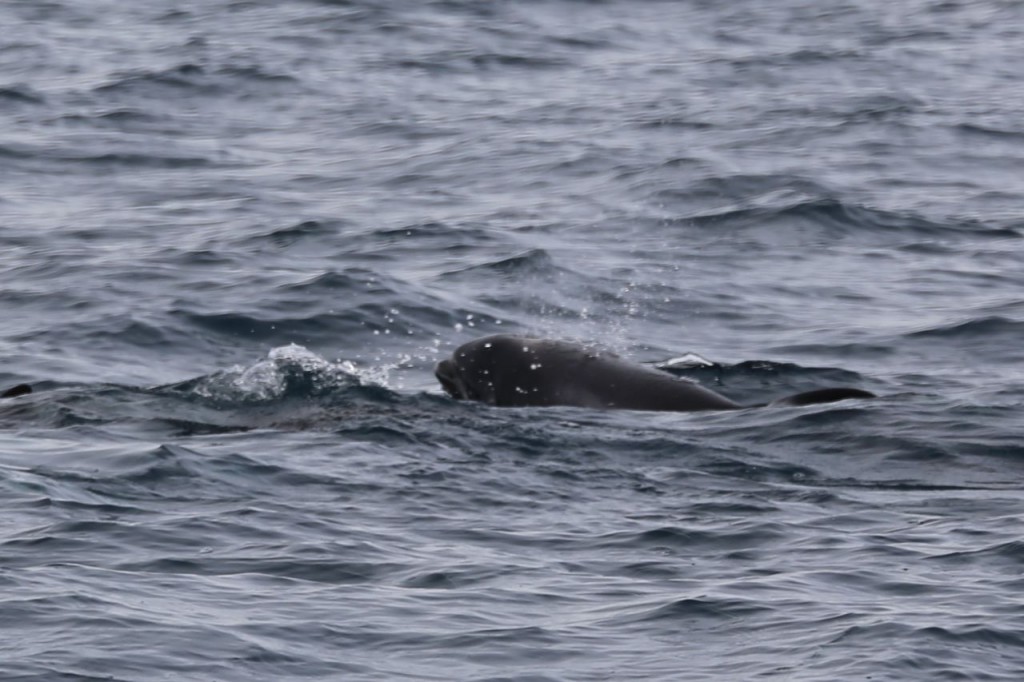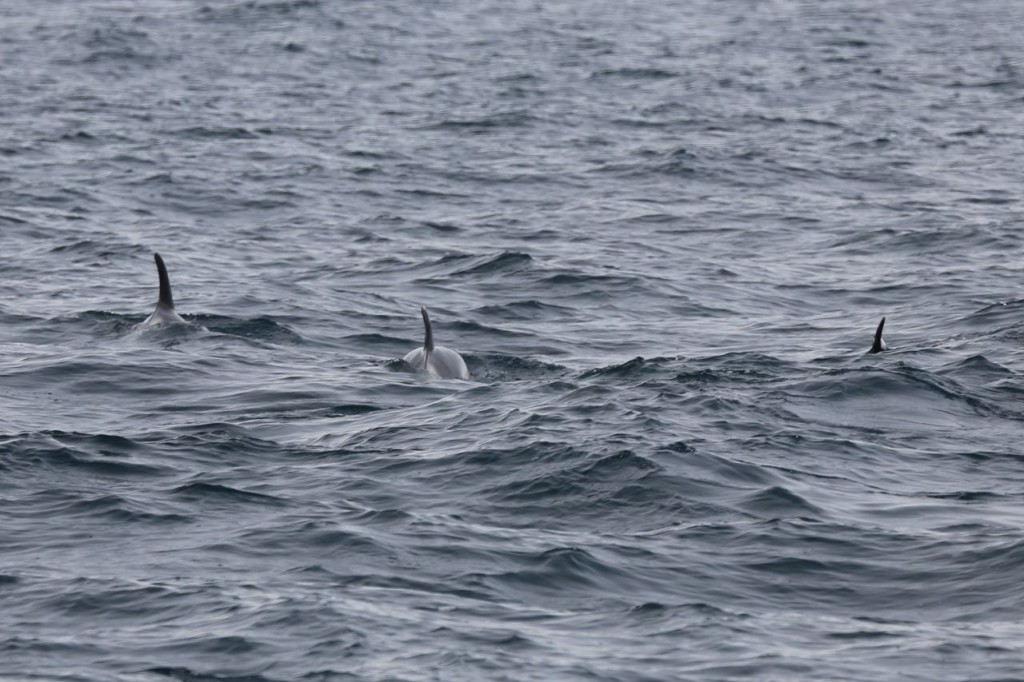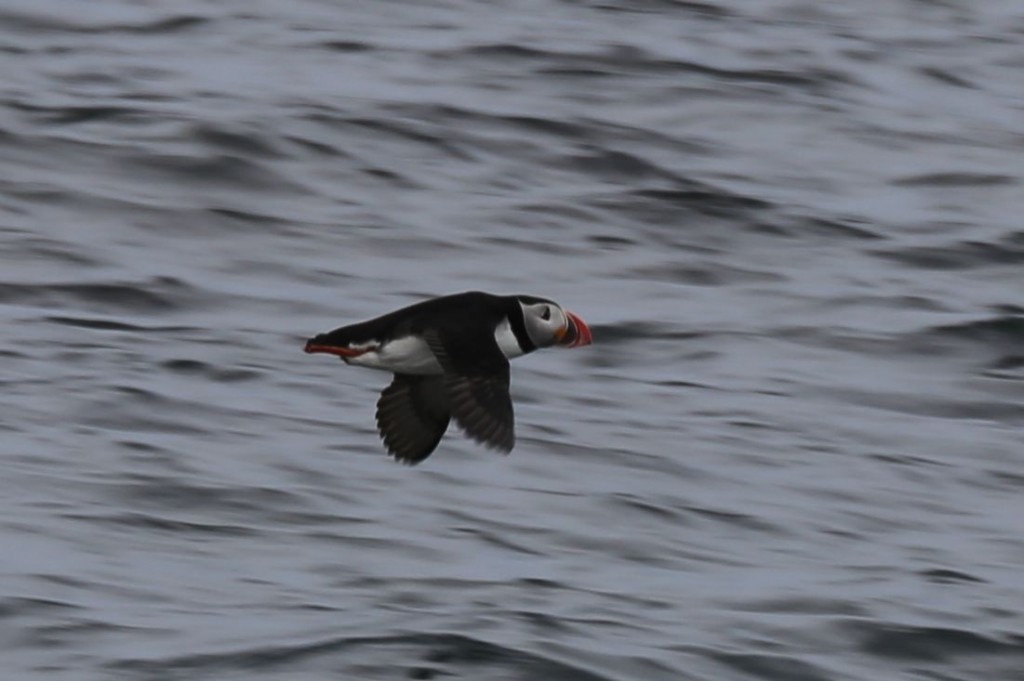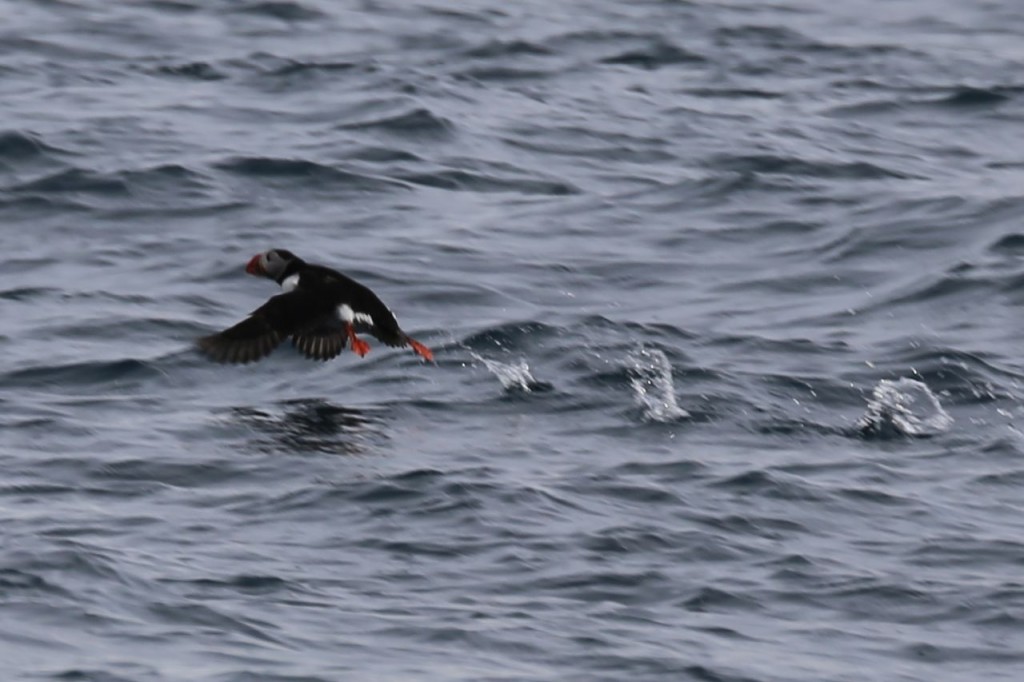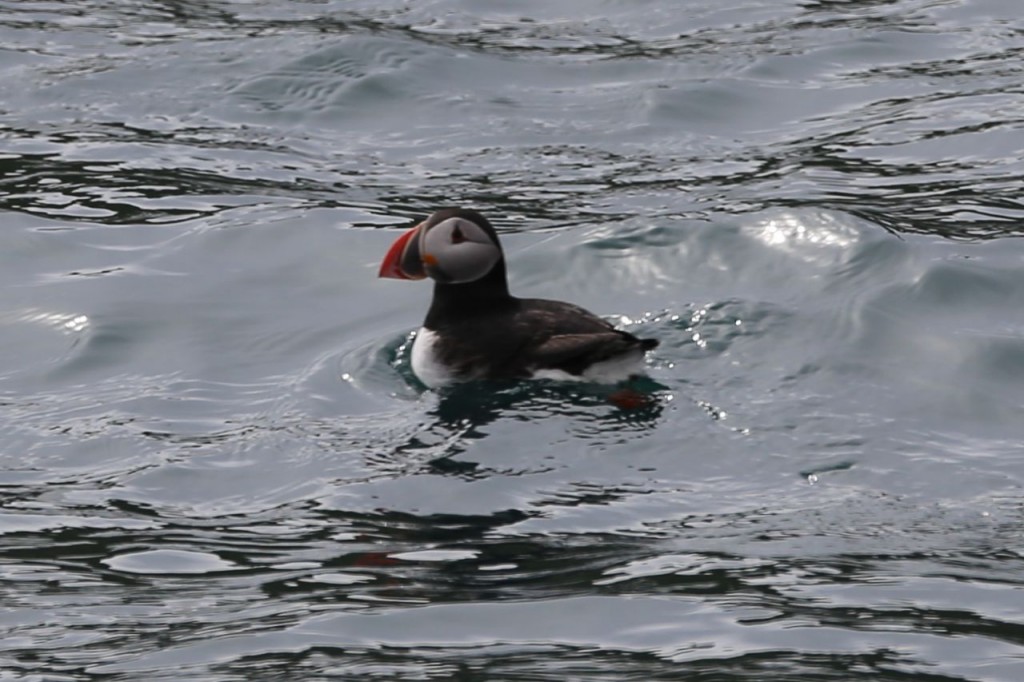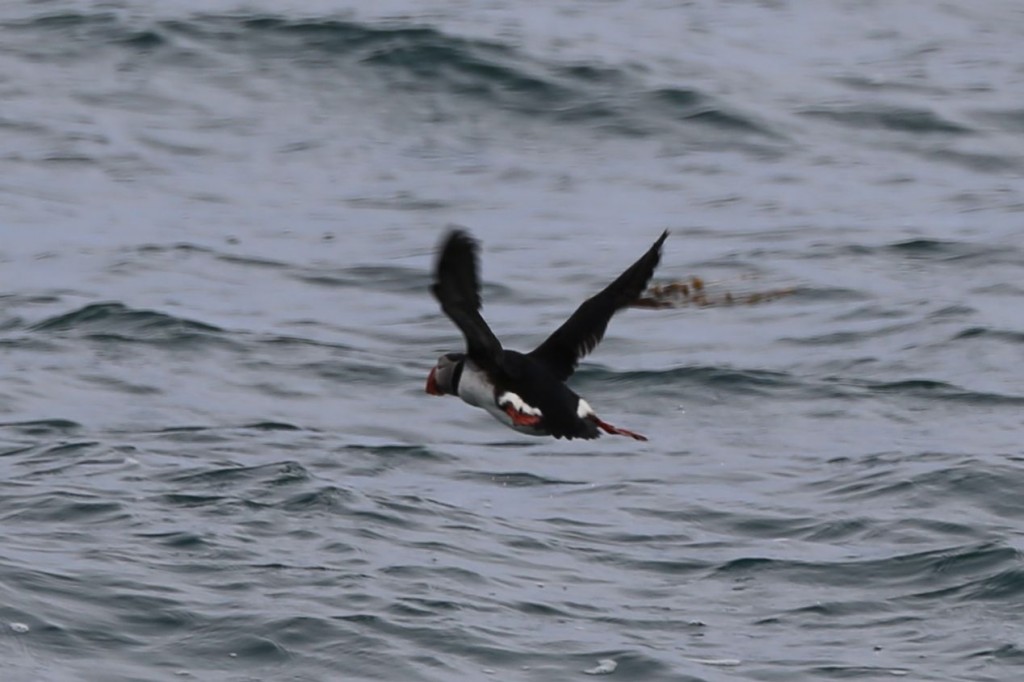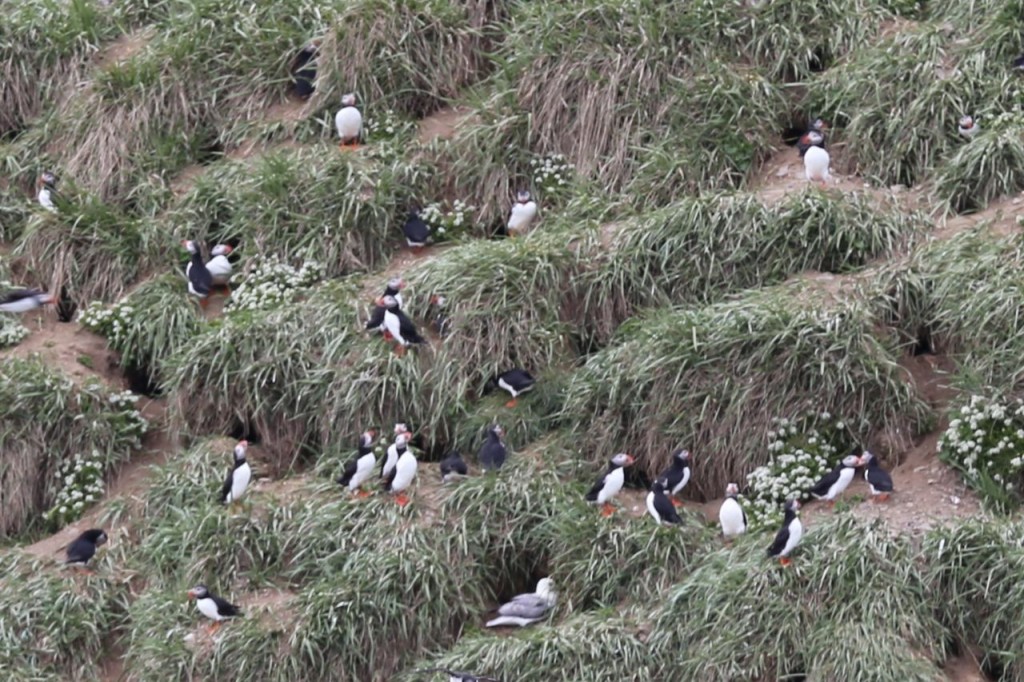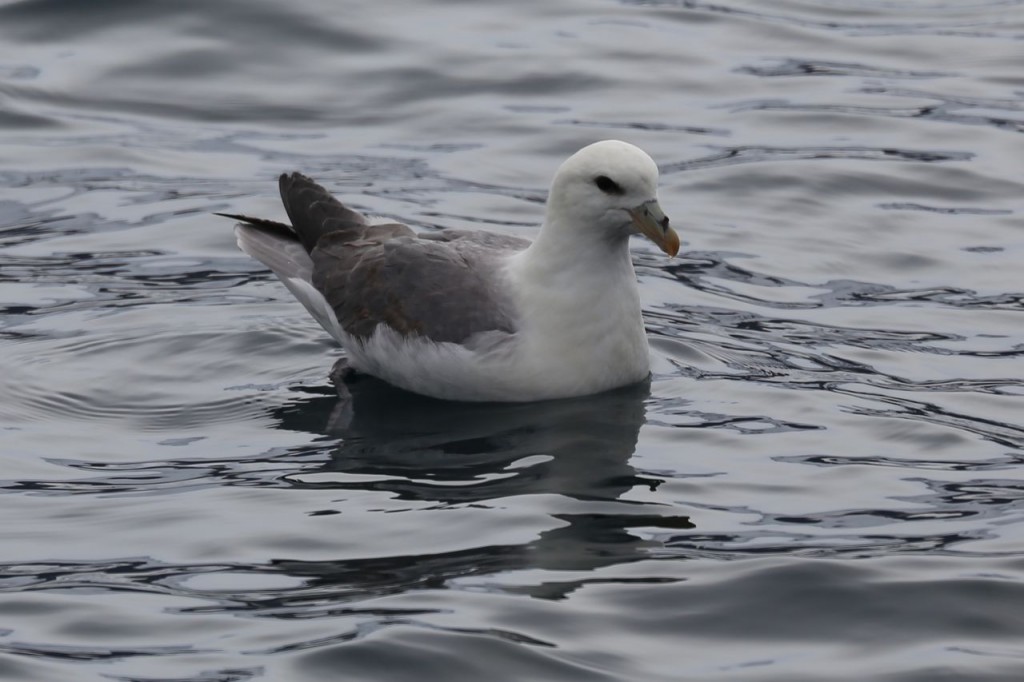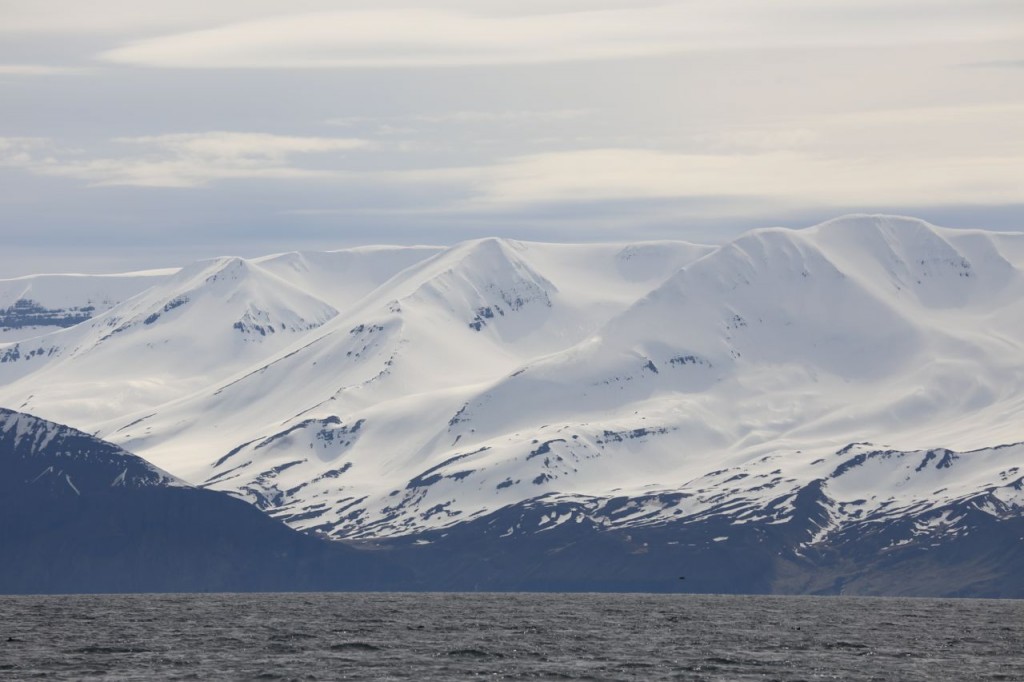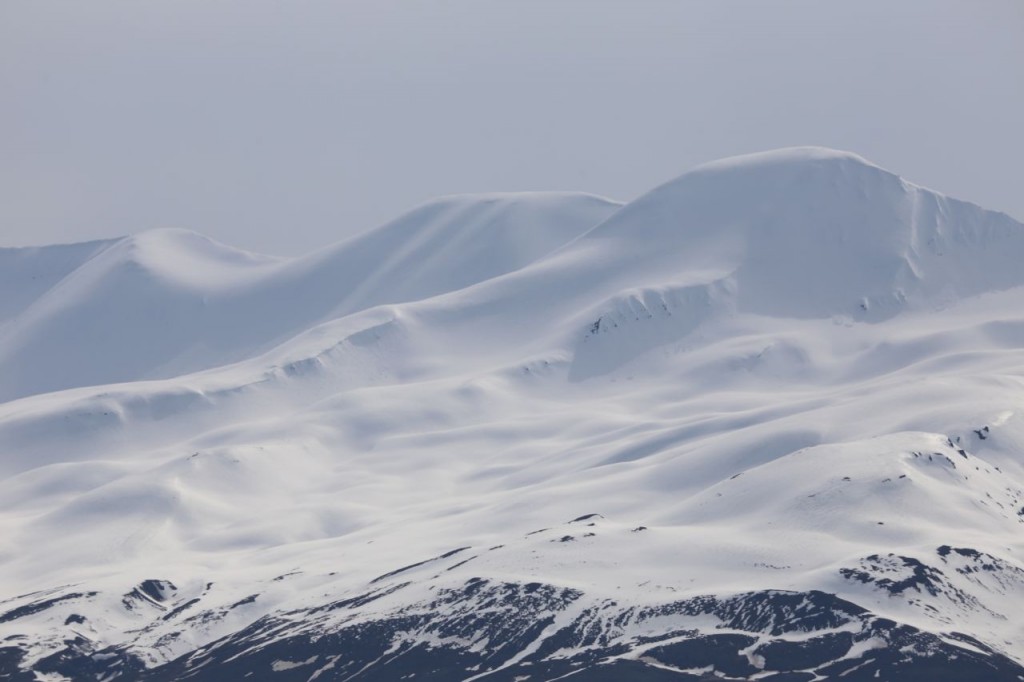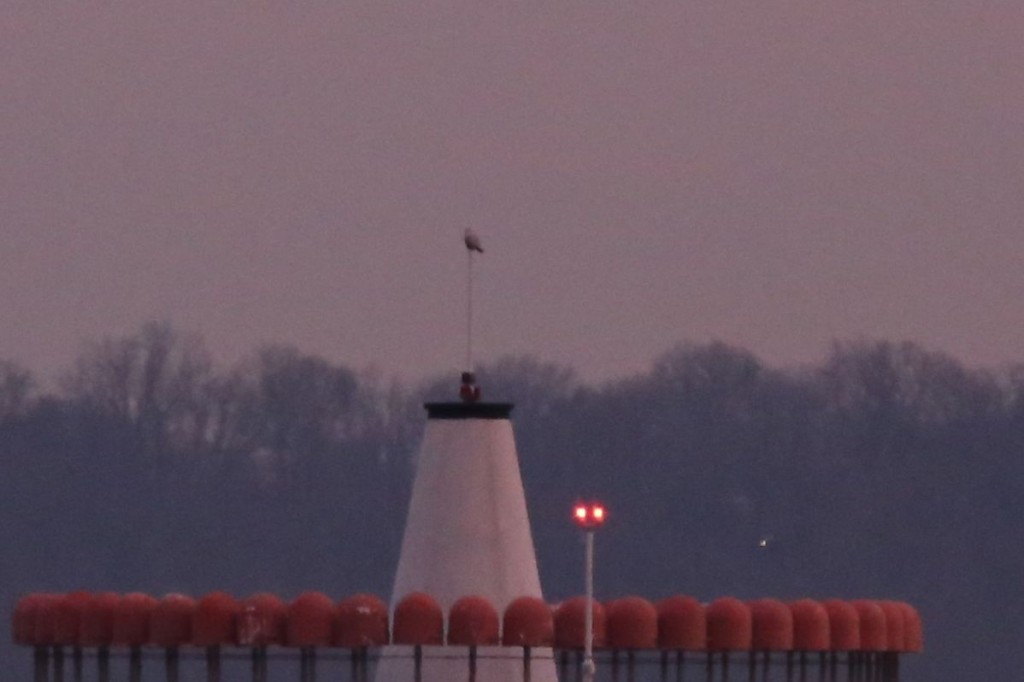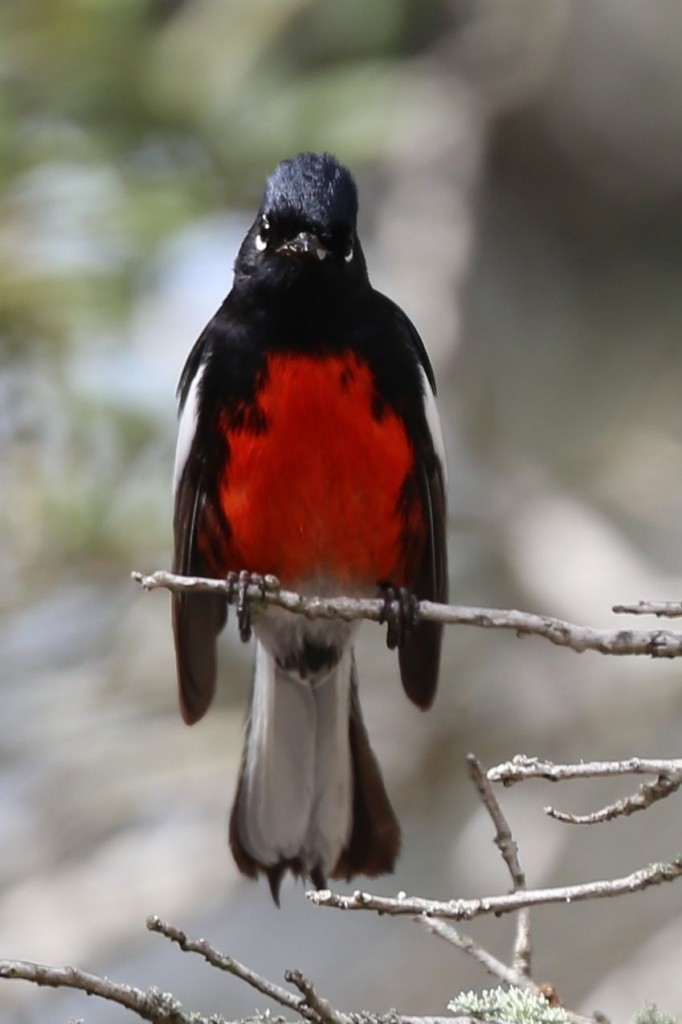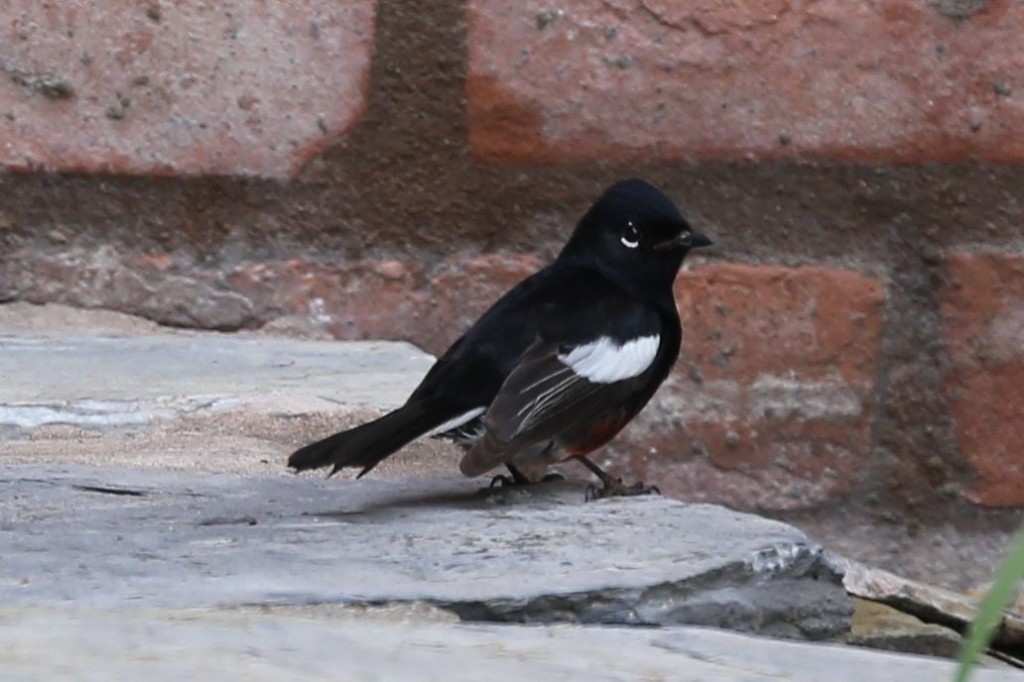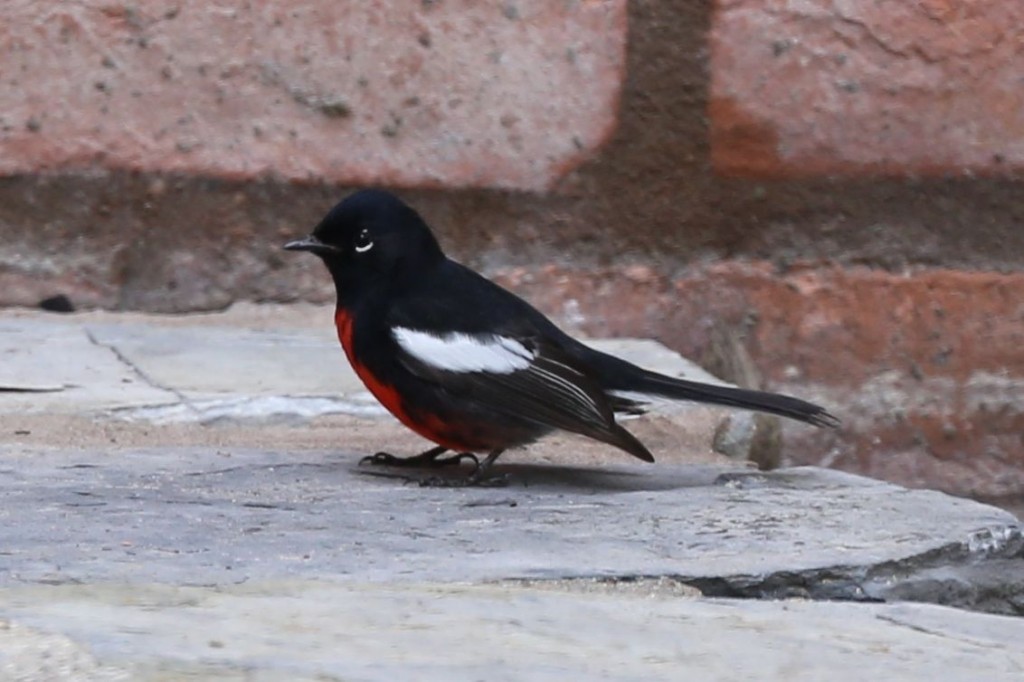I got to visit Cueva Ventana (Window Cave) today in Arecibo, Puerto Rico. The tour starts by walking by Pee Wee Cave, which only meets the bare minimum requirements of a cave. You don’t go in. There is no point or room really. There is a short walk through the forest, which when I visited meant getting to see among other things a bunch of giant snails on the trees. Then you walk through cave number two, which I don’t think they actually named. The middle portion of this cave is, well, cavernous, with huge ceilings and wide walls. However the walk through it is fairly short. Then you walk down an extremely steep path to get to the actual Cueva Ventana. There are bats living in there among the limestone columns. At the end of the cave is the Ventana. It has amazing views of the Arecibo River valley. The valley is gorgeous, and you can see the mountains beyond. The tour is worth the view alone. However the caves are really neat to see also, and I love bats, so getting to hear and see them was also a highlight. Sadly while there, you can see vandalism from years past, but tourism is now helping to support security and clean up for the site.
Tag Archives: wildlife
Iguana
While touring El Morro, I discovered that it is guarded by a platoon of iguanas. I will assume that is what they are all doing there. That, and most of them seem to be there because they know that is where there is a lot of tourists, and the iguanas like to have their photos taken. Iguanas are hams. One was posing on the top level. I took a few photos, walked away to take photos of the fort, and walked back. The iguana had moved closer to the edge and where the people were. I kneeled down and got out my macro lens, and the iguana obliged by posing to make sure its best side was shown while I took photos for several minutes. Now, I only do what the iguana clearly wanted and post its photos.
Mouse Hunt
I have two cats, Feste and Orsino, and Ferdinand the basset hound. The good news is they all get along. The bad news is they all get along. The get along so well they are a hunting pack. The good news is they keep the house free of pests although not so much the insects. The bad news is the only reason some of the pests are in the house is because some member of the hunting pack brought it in through the pet door. Normally they like to bring their trophies to me live. If I realize a prize has been brought in early enough, I can usually catch the prey and release it back outside relatively unharmed. Otherwise I’m on past prey patrol. Voles, moles, and mice are the main prey. Once in Texas, Puck the cat brought me a lizard. I’ve seen one dead bird. Luckily no snakes. Ferdinand the basset hound takes the prize for once while we lived in North Carolina bringing me an adult live opossum. He dropped it off in my bedroom. Wasn’t I impressed? No, I screamed like the girl I am. Eventually I got my wits about me after calling my mom in Texas, which of course was going to help somehow. She told me to call 911 because well it probably wouldn’t be the stupidest phone call they ever got. [Side note: I did call 911. Orange County North Carolina probably doesn’t get that many phone calls expect for drunks on Franklin Street in Chapel Hill. In fact in Orange County you are supposed to call 911 for wildlife emergencies which is my justification for calling them. A very nice operator told me they would come help for wildlife that can carry rabies. Turns out opossums have too low a body temperature to carry rabies so all he could do was give me the phone number of a animal removal company. Still, good to know about opossums and rabies.] Anyway I finally calmed down. The opossum kept playing dead while both basset hounds and both cats kept watch to see if it would move again. I managed get a large trash can over it and pushed it down the hall and out the front door all while I was trailed by my hunting pack. After safely closing the door, I watched the opossum finally realize it was free. Before walking off, it looked at me as if to say thanks and possibly give me the middle opossum finger. I then went to go find a very large glass of wine.
This morning I heard the warning signal of both Feste and Ferdinand running across the living room. The I heard a squeak. I investigate, and both of them are staring intently at something. Great. It’s a mouse. It runs. Feste catches it in his mouth. Lets it go. Ferdinand catches it in his mouth. Lets it go. Repeat. Repeat. Repeat. Finally, Feste grabs it in his mouth and runs downstairs into my office. I then spend the next 20 minutes trying to catch the poor mouse that is trying to figure out how to get out while Feste mainly watches. Several times I would get close to getting a container on top of the mouse, and it would run to Feste for protection. I kid you not, it would run to Feste who would shelter the mouse in between his front legs. They would just look at each other. The mouse would move away. Feste would bat at it a little. I would try to catch the mouse. Repeat. Finally the mouse ran out into an open location where I could get a trash can over it. I got the trash can over it, turned it over, and got it out the front door. Then it took me a few minutes to get the mouse to finally leave the trash can. I kept telling it to be free. I have to go to work. Look there are nice plants and leaves for you to hide in. Be free. It finally did as I asked.
Sampling Fish
Recently for work I got to help out in the field taking samples to quantify environmental contamination. Some of the samples we were taking were fish tissue to measure the levels of polychlorinated biphenyls (PCB) in them. The fish live in a river that was contaminated decades ago. The sampling results will be used for fish advisories and also to determine a clean up plan.
Sampling fish starts with the really fun part, which is cruising on a small electrofishing boat. Electroshocking the fish allows you to catch them alive and throw back any fish we didn’t want. We had target fish we were trying to catch to sample, and those were the only ones we kept, and we only the number of target fish we needed. The electroshock sort of stuns the fish but doesn’t kill them. The electrofishing boat has two long poles with anode wires hanging off of them protruding from the front of the boat. There were more wires hanging from the bow of the boat, and those are the cathodes. The electricity flows from the anodes to the cathodes. We stood at the front of the boat in rubber soled boots with nets extended waiting to catch any fish stunned by the electroshocking. Netting electroshocked fish is not actually as easy as it sounds. Some of the fish are more stunned than others, so some fish seem slightly confused but then swim away. Also, some were stunned but at a depth too low or cloudy for us to catch or see. According to the boat’s captain, the water had really low conductivity, which was making it difficult. Since we had target fish we were trying to catch, I, naturally, kept catching fish we didn’t want. I threw a lot of fish back. Still, a day on a boat catching or not catching fish was a wonderful change from the cubical I normally work in. Also, I learned that you really need polarized sunglasses when out on the water.
Once we got the fish to shore, the biologist took over. The fish were weighed and their length measured. He took a a sample of their scales from a standard location, and those scales were going to be used by a laboratory to determine their age. Evidently scales can be used to age fish in the same manner tree rings age trees. WARNING: If you are uncomfortable looking at the insides of fish, do not read any further. You should probably not eat fish also, if you can’t look at an uncooked one.
The rest of the scales were then scraped off. The fish were then cut. Only the fillets were used for sampling. The part of the fish used for sampling can differ depending on what the exposure pathway being examined is. We took two different parts: the filet, which represents what a human would normally eat, and also the fillet with rib meat. The rib meat is normally not eaten, but it would have more PCBs in it, so using it in the sample would represent a worse case scenario for a human consuming fish.
I also learned a bit of fish anatomy during the sampling. The biologist was also sexing the fish.
We weren’t necropsying the fish, but we still got a look inside, including sometimes as to what it had eaten recently.
We sampled quite a few fish, but it was for science and to benefit the community.
NMNH Cetacean Collection
Friday I got the incredible opportunity to take a behind the scenes tour of Smithsonian Institute’s National Museum of Natural History. They let a small group of people take a tour of the cetacean collection stored in an offsite location. NMNH has the largest marine mammal collection in the world, and it is awesome. [More properly said, the people of the USA have this amazing collection, and NMNH has been endowed to take care of it.] Most of their specimens are not on display to the public but are stored offsite and in a manner where they can easily be studied. Charley Potter and Nick Pyenson, scientists at NMNH, showed us many of the cetacean specimens, talked about what they do, and answered our questions. I want to thank NMNH and their staff, especially Hilary-Morgan Watt, Katie Sabella, and Trish Mace, for letting us take this amazing tour. Also, thank you to Steve Thornton, a visiting researcher, who gave us a detailed description of how dolphins use their nasal passages to make noises, which at least in my humble opinion is fascinatingly and amazingly complicated. Also, I would like to thank them for having their specimen collection online. I missed some of the species names of specimens we looked at, but because the specimen number was visible in some of my photos, I was able to look up information about the specimen through their website. This is an incredible resource.
They had two bottlenose dolphin skulls out sitting side by side. One was from a coastal bottlenose dolphin, and one was from an offshore one. When sitting side by side, it was easy to see how much smaller the coastal one was than the offshore one. The morphological differences relate to their different eating habits, as the offshore ones feed on larger animals.
They had part of a forelimb bone from a right whale. The fungal like growth on it was bone that had grown around something on which it had been entangled.
There was a drawer filled with narwhal tusks. Only males have the tusks, and most twist in the same direction. Most have a polished end. Up close they really pretty and have interesting texturing. They are hollow with varying diameters.
In the same cabinet as the narwhal tusks are pieces of baleen. Baleen can be used to distinguish different types of whales and is fast growing like hair. Examining the baleen can give information about the trophic feeding level of the whale and can give up to 40 years worth of information on the whale and water conditions, by analyzing it along different points along its length. Before plastics and fiberglass was invented, baleen was split into rods and used in such things as umbrella skeletons, of which they have one.
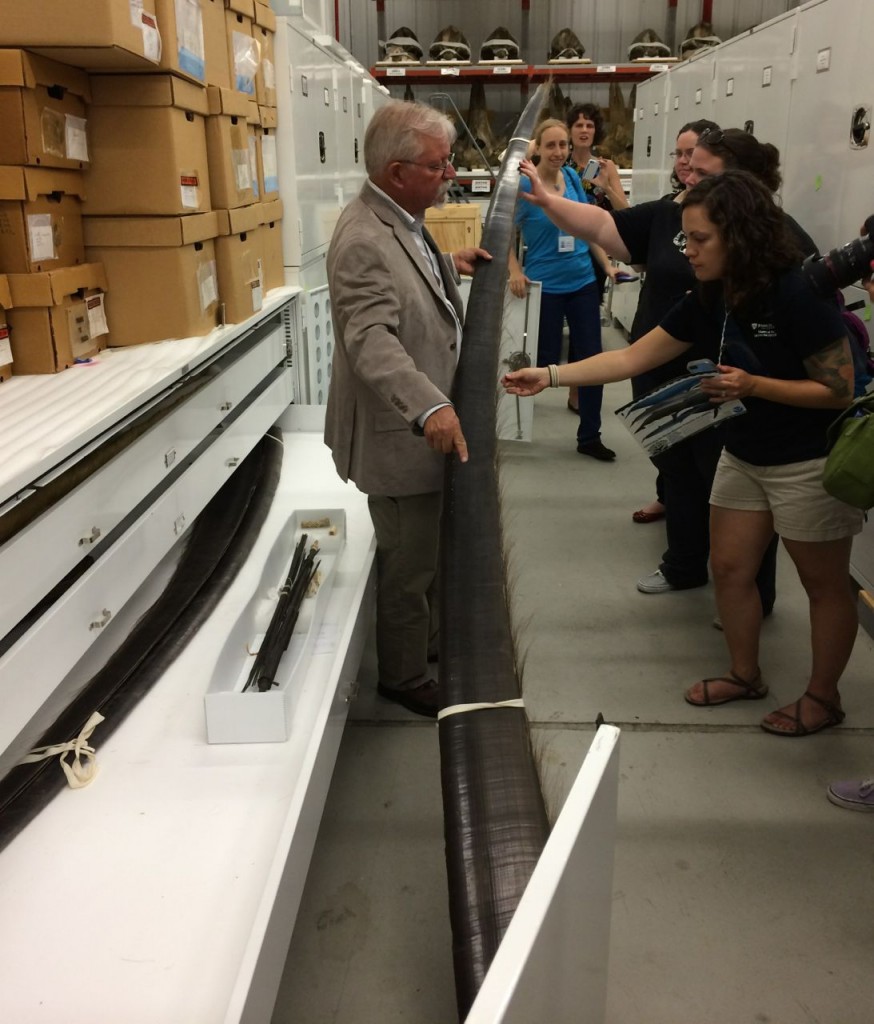
Baleen, Charley Potter is holding one piece. In box in drawer is an umbrella skeleton made from baleen.
They have an amazing collection of skulls. There are skulls upon skulls filling up shelves. The skulls are placed side by side by species and thus can compared easily. There were numerous Baird’s beaked whale skulls that had various shades of white and off white depending on the conditions in which they were found.
The Blainville’s beaked whale skulls were really interesting. The males have two giant, erupted, modified teeth on their jaw, which are used for combat. The beaked whale skulls are the only skulls which can be sexed. The males have very dense skulls and thus are quite heavy when compared to the female skulls that were approximately the same size. They let us life each one by the beak, and the difference was really obvious.
They were still processing some specimens. There was a pilot whale skull out that had a lot dried soft tissue attached to it.
There was another skull sitting next to the pilot whale skull that was some type of beaked whale. I was completely fascinated by the porousness of the bone.
There was also a bag full of vertebrae. I don’t know what species it was from, but the pattern on the vertebrae was really interesting.
In an adjoining building they had the bones from the really large whales. The building was complete with a giant garage type door through which to bring the specimens. There were shelves filled entire vertebral columns from various whales. On the floor was the skeleton of a right whale.
All the skulls were propped up on metal carts. They were placed vertical for easy study. Because of the way a Sei whale skull was placed vertical, the radiating lines on the palette could be easily seen. All baleen whales have these lines, and the lines house blood vessels and nerves that feed the baleen.
There were several gray whale skulls all sitting next to each other. The skulls were collected from various years and includes one from pre-1850s. The genetic makeup of the whales before and after the whaling industry can be compared, and it will give information about the genetic bottleneck that occurred due to whaling and the diminished population.
They also had a blue whale jaw bone that is not only the largest blue whale jaw bone ever collected, it is also the largest single bone ever collected from any creature that has lived on Earth.
Finally there was a North Atlantic blue whale skull, which was just amazing to view. It completed dwarfed us when we gathered for a group photo in front of it.
Vermont Nature
After visiting the Green Mountain Audubon Center, we visited the Richmond area and also went north of Burlington to the area where the Winooski River flows into Lake Champlain. The area is really pretty, and of course Lake Champlain is gorgeous.
Green Mountain Audubon Center
I came to Vermont for a conference, but I arrived a day early to do a little sightseeing. One place we visited was the Green Mountain Audubon Center outside Huntington. It is a really lovely place to wander around for several hours. It has a hemlock swamp, a gorgeous river running through it, forests full of ferns, and lots of pretty flowers. We also saw a few nice birds, and I saw some really cool looking insects, which I cannot identify.
Whales, Dolphins, and Puffins
On Day 9 in Iceland, we took a cruise out of Húsavík to try to see whales. We chose a cruise on a sailboat that took us by an island where we were pretty much guaranteed to see puffins. The puffins did not disappoint. We also lucked out and saw white-beaked dolphins and two blue whales. I have never seen blue whales before, so I was very excited about that. We were also visited by one friendly fulmar, and the cruise included spectacular views of the fjord.
Snowy Owl at DCA
Several snowy owls have been seen in the DC metro area. Many people in the area have heard about the one that was hanging out in McPherson Square and then got hit by a Metro bus. This is why DC can’t have nice things.
I had heard that a snowy owl was spotted numerous times at Gravelly Point, so today I decided to go for a long walk that included going there. I was not exactly disappointed. When I finally got to Gravelly Point, there were numerous people standing around with scopes, binoculars, and cameras with zoom lenses. I was doubtful that all of them were plane spotters, and I was right, they were birders. There was a snowy owl hanging out at Reagan National Airport. It was right next to the runways, possibly it was too warm today, and it was going to hitch a ride north. According to the birders I spoke to, the theory is that it likes the airport because the low cut grass reminds it of the tundra. I imagine the airport also has rodents. I got a few of it on top of a windsock and later what I am fairly sure is a weather station. You are going to have to trust me. That really is a snowy owl, I promise.
On a related note, you can generally spot birders easily when a rare bird is about. Birders travel in flocks like the birds with which they are fascinated. When I arrived at the park, you could say, I joined my flock. Birders are really wonderful because they are almost always happy to let you use their scope, point you in the right direction, and share information about the sighting and other sightings. The enthusiasm is infectious. While I was standing there, at least a few non-birders stopped to ask at what everyone was looking. Many were equally enthused about the rare sightings. I hope these snowy owls that have come to DC will get more people interested and concerned about nature and wildlife.
Painted Redstart
I haven’t even had time to build the warbler section of my bird page. It is going to take a long time to get it fully built. However, I photographed a bird today that I wanted to get the photos posted quickly though. While driving back from a birding trip in south Texas, we stopped at a rest area on 281 near Falfurrias. I walked around with my camera thinking I might photograph a few titmice or something. I did get them, but I was stunned to see two beautiful birds that I have never seen before. I saw painted redstarts! They are not supposed to be in that area or even Texas, especially this time of year. I saw a life bird at a nice little roadside rest area. You just never know what kind of bird you are going to see when you look.

